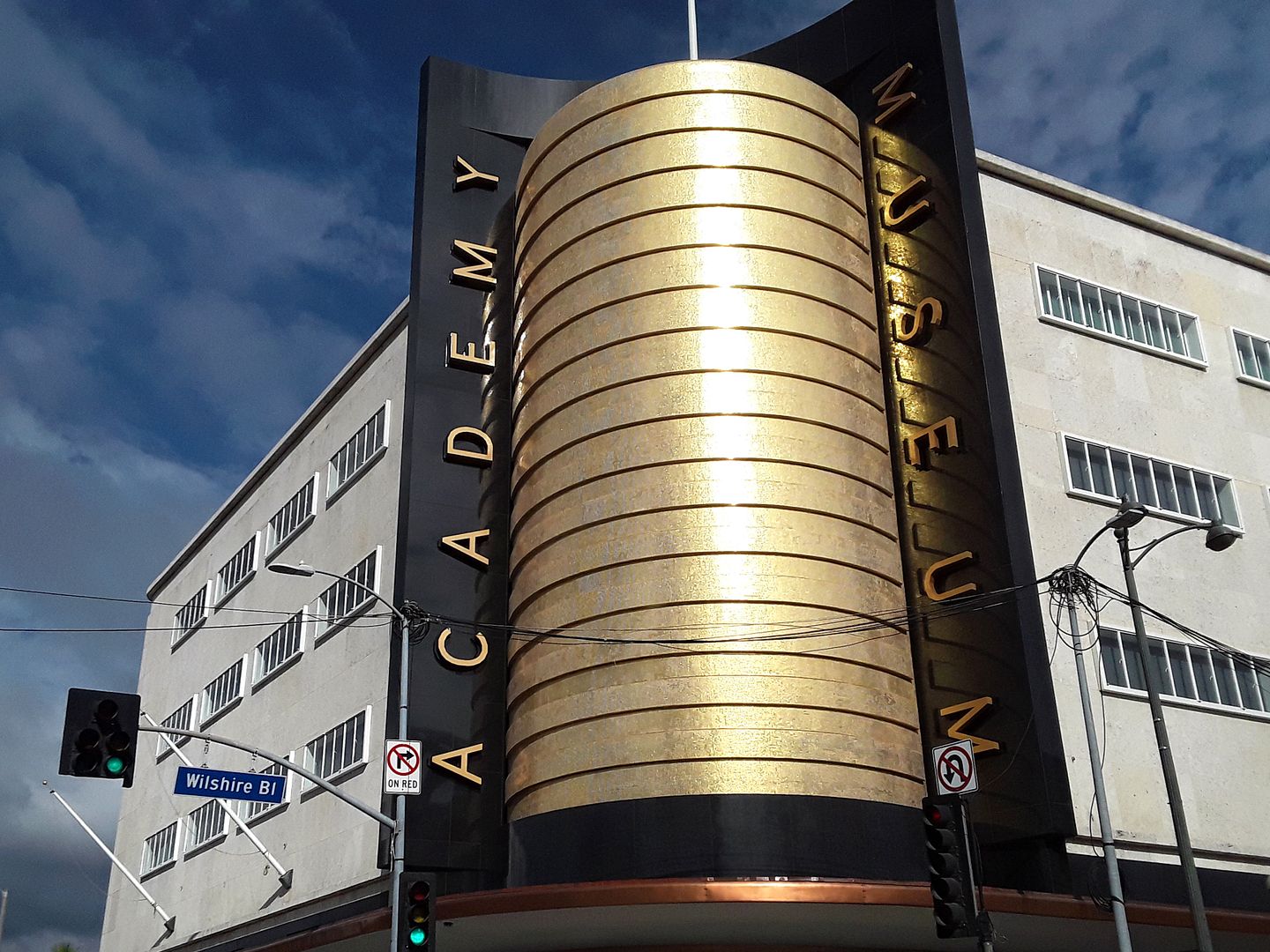
After all, I'd visited the site (the former May Company building) before they gutted the interior.

And I'd been keeping an eye on the construction every time I'd drive by on Wilshire or Fairfax.
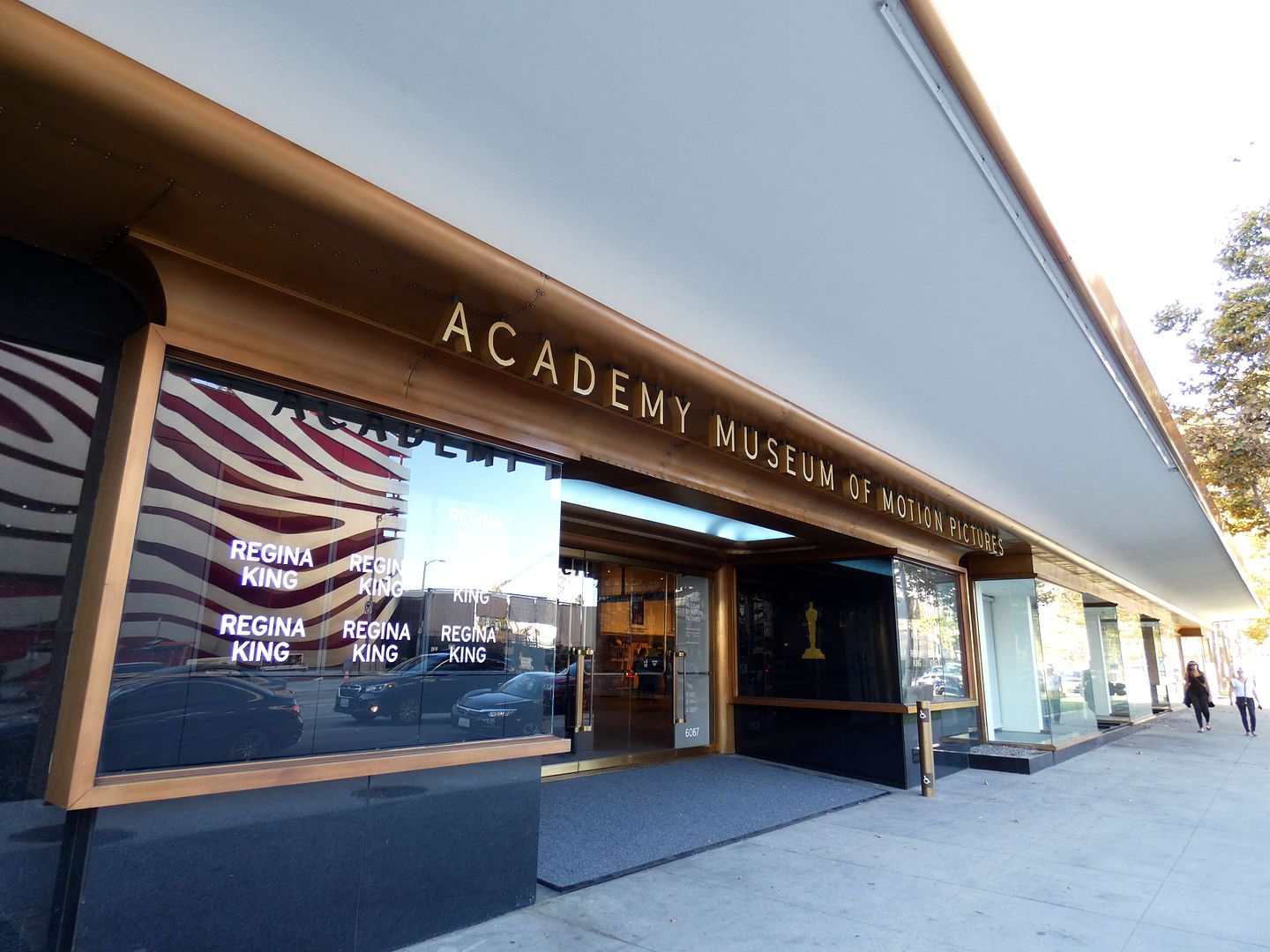
I was pleased to see much of the façade retained, including the former department store display windows...
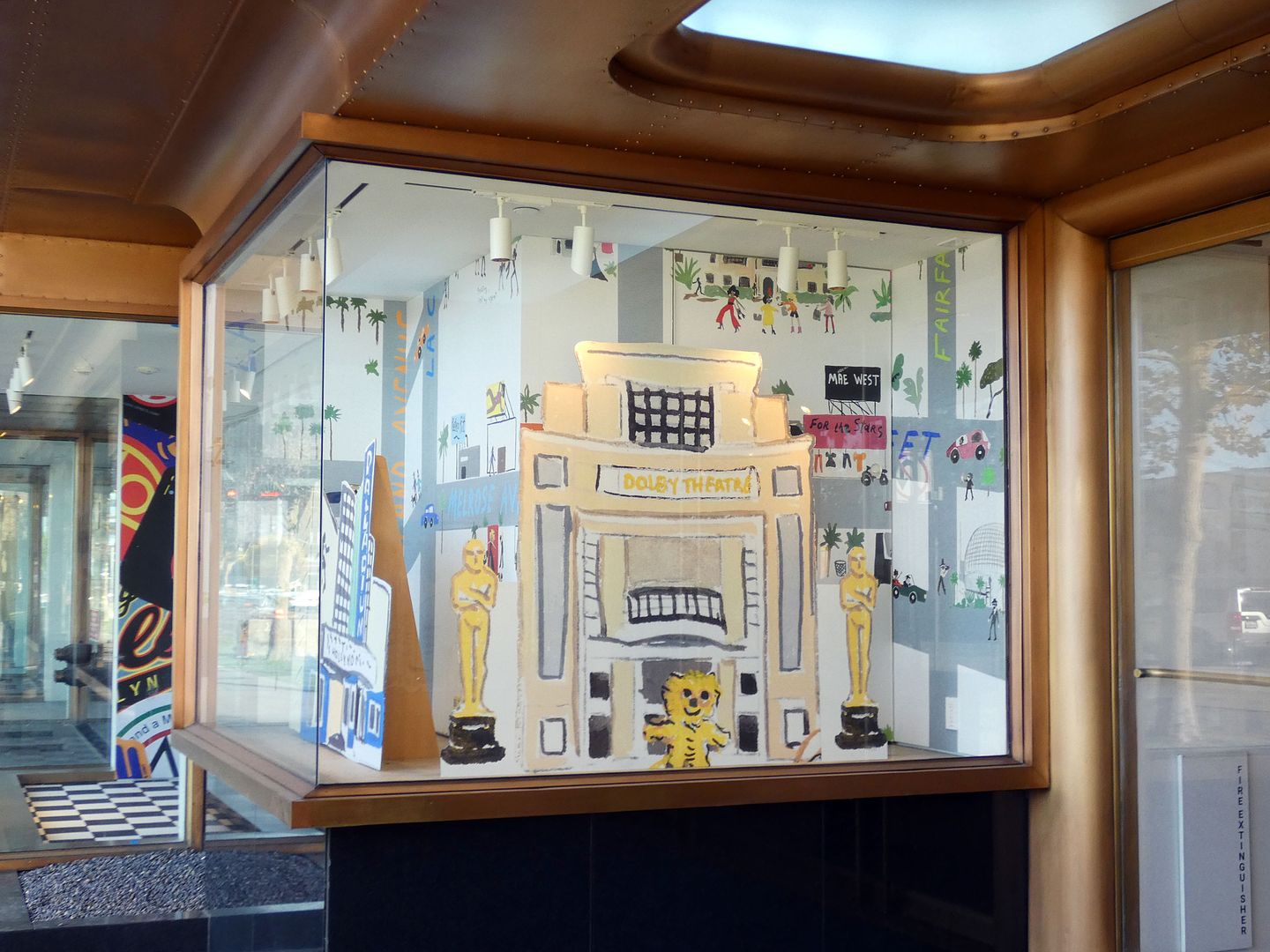
...which now contain larger-than-life Oscar statues and renderings of L.A. landmarks, like the Cineramadome and the Dolby Theatre (site of the Academy Awards ceremony since 2001).
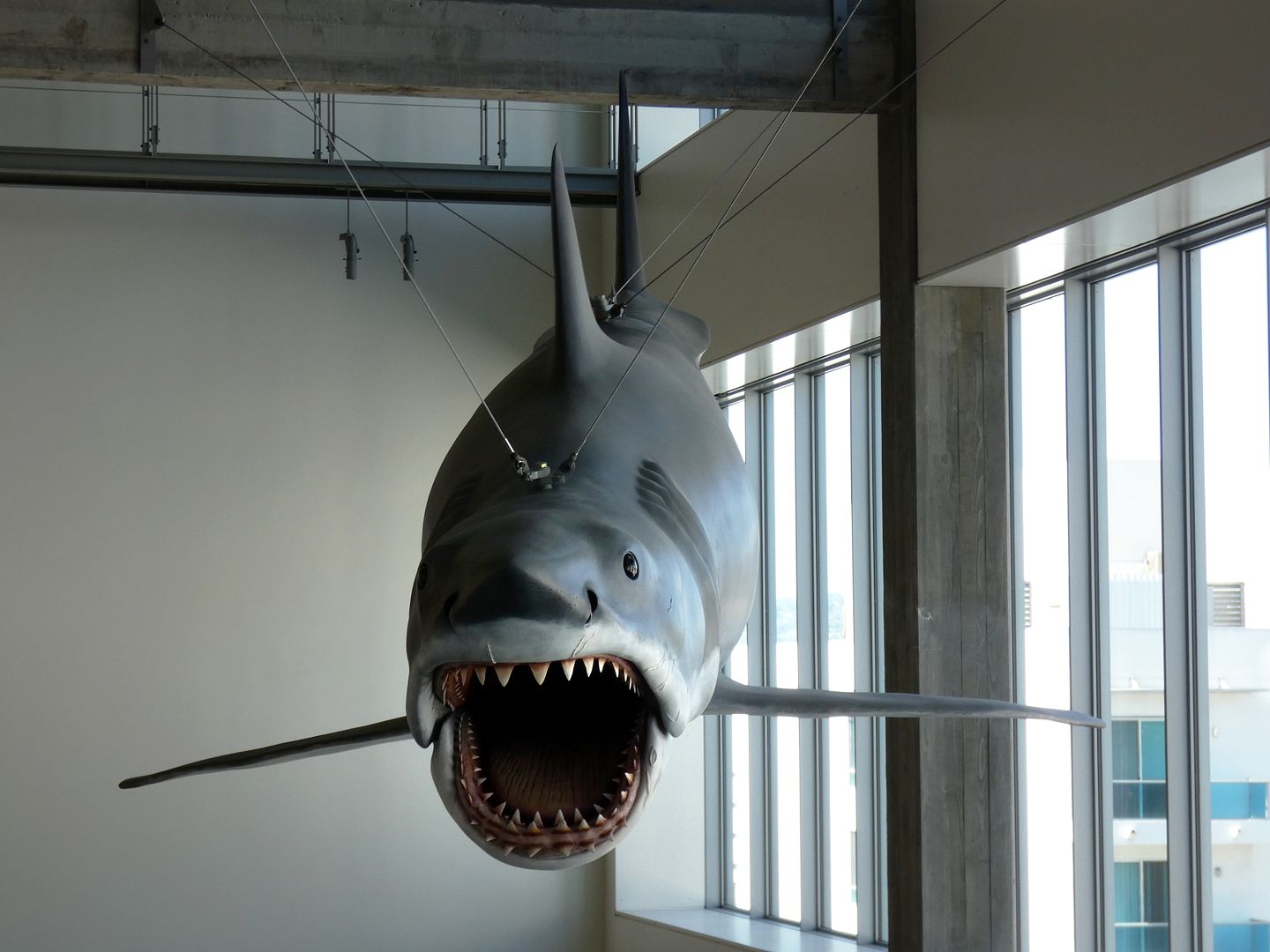
One of the most publicized items in the museum's collection inside is a restored fiberglass replica of "Bruce," the shark from Jaws (made from the original mold)...
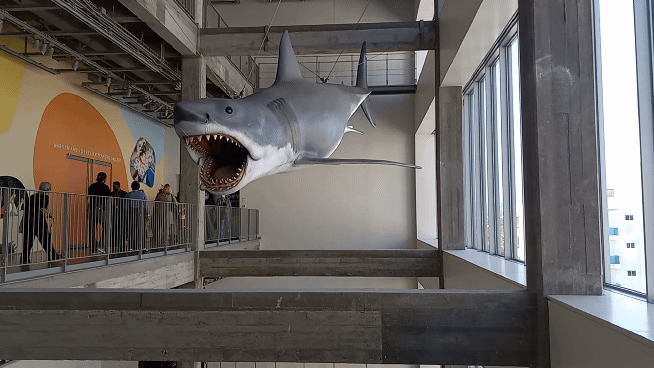
...which once hung as a photo opp on the Universal Studios Hollywood studio tour and was rescued from a junkyard in Sun Valley in 2016.

A personal favorite was the two-story original backdrop of Mount Rushmore from Hitchcock's North By Northwest (1959), which you can view from the second and third floors.

Those are just two of the showstoppers in the museum collection—but the institution's exhibits go way beyond the crowd pleasers.
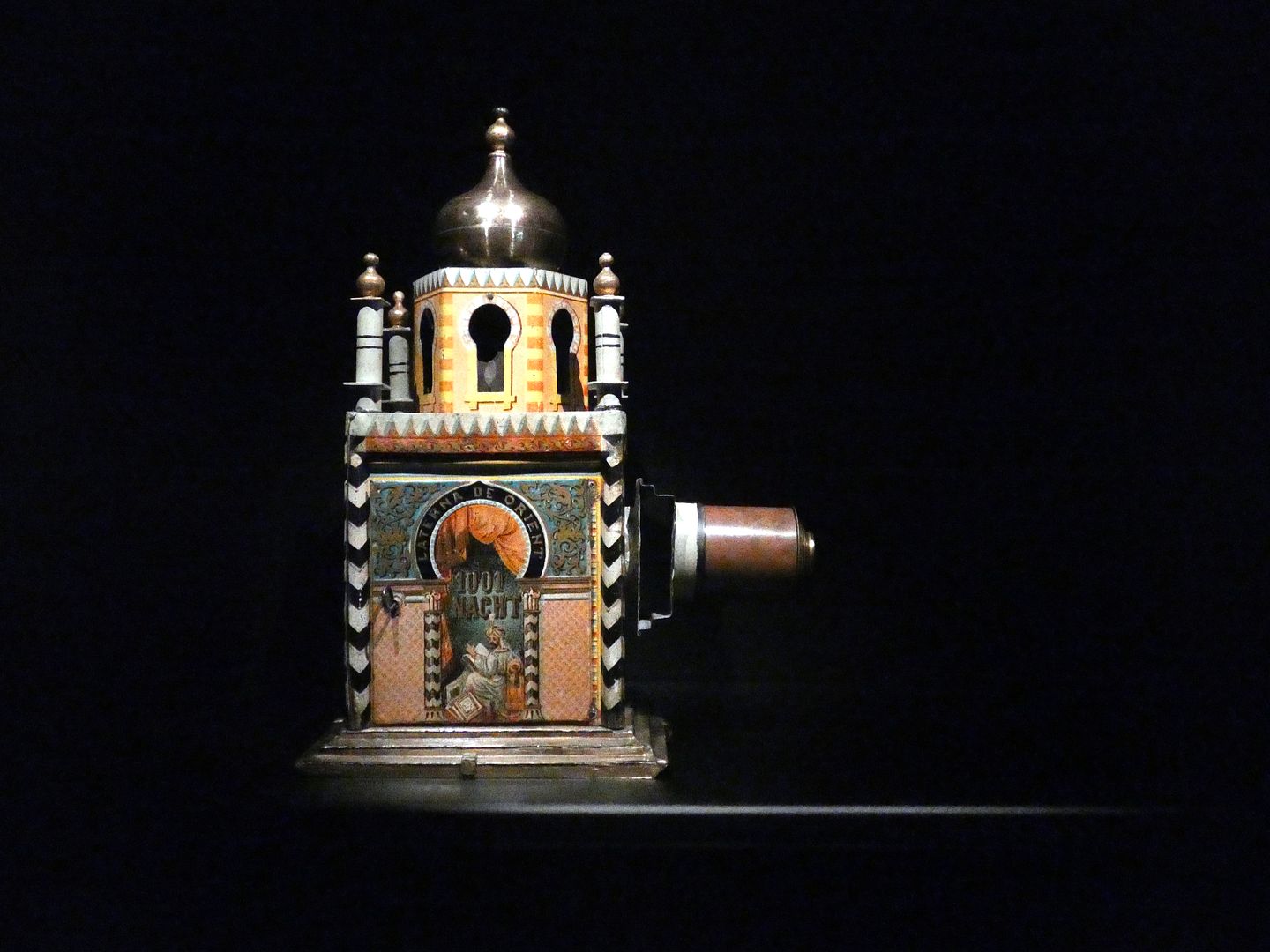
The Academy Museum is really a museum about the craft of making motion pictures—and it starts even before the beginning, with "The Path to Cinema: Highlights from the Richard Balzer Collection."
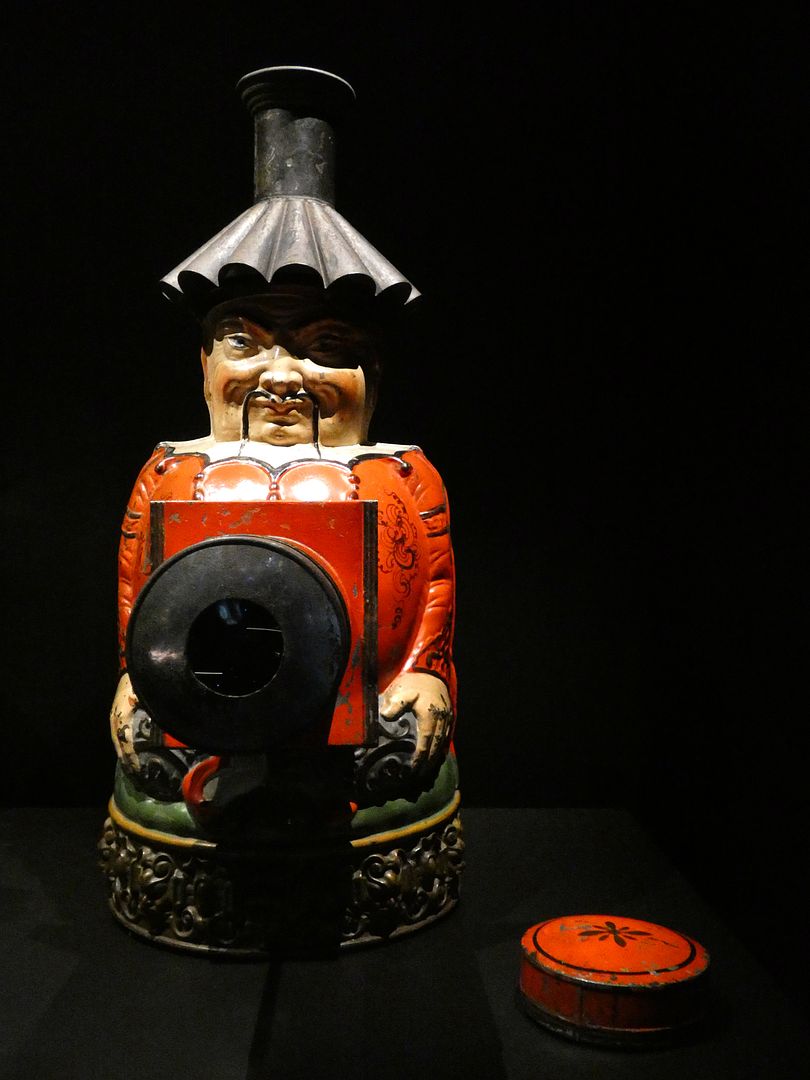
It includes magic lanterns from the 18th and 19th centuries—including the "Bull's-eye lantern" from England, the "1,001 Nights" lantern from Germany, and the "Buddha" lantern from France.

This is stuff most people who are alive today have never seen in action—like Victorian-era phantasmagoria, chromatropes (some for creating "artificial fireworks"), a praxinoscope (the successor to the zoetrope), and the newspaper movie machine (circa 1916, aboveˆ.
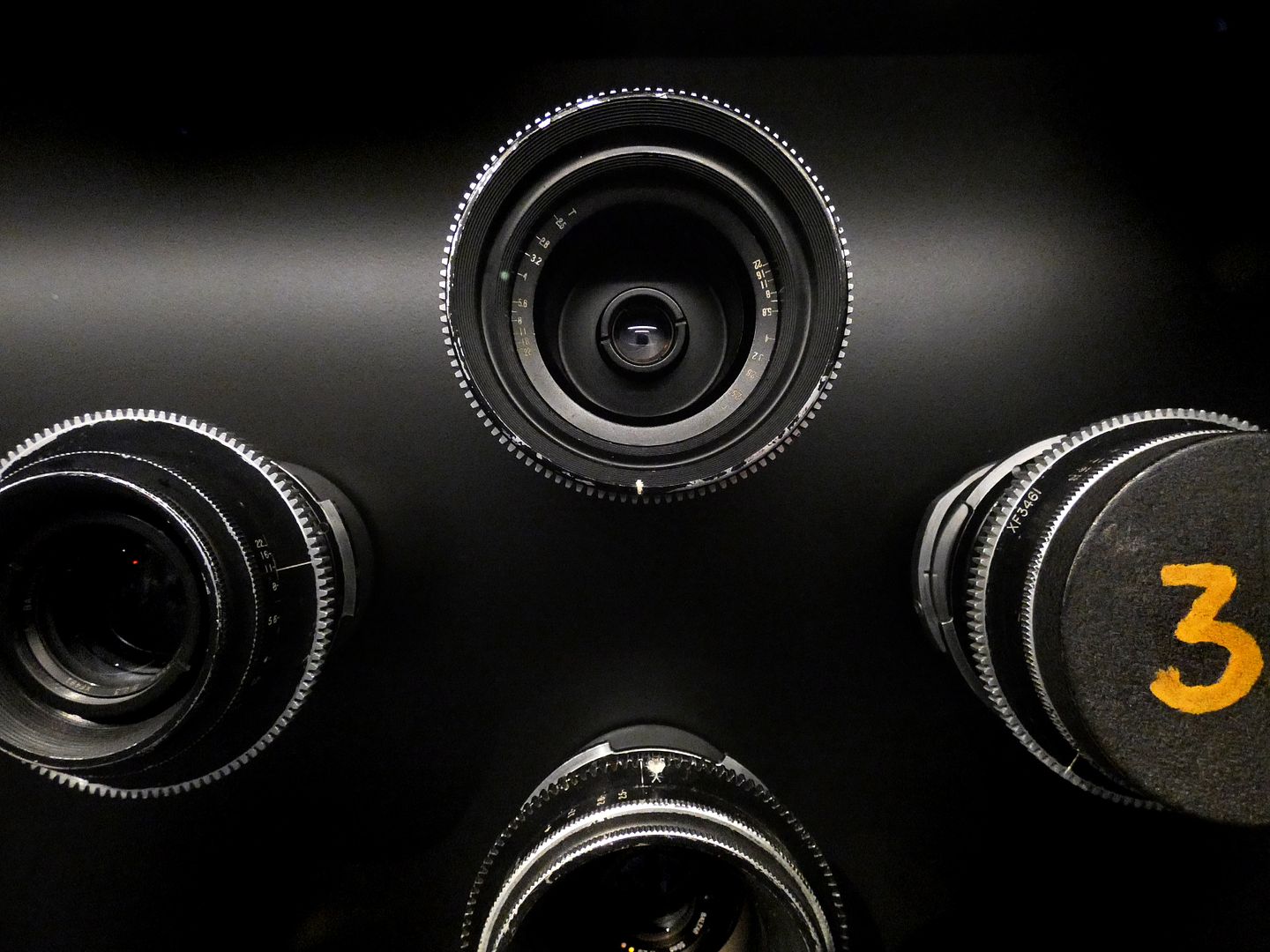
But then the museum moves quickly into the art of modern-day moviemaking, including the Bauch & Lomb camera lens set used by cinematographer Gregg Toland to create Citizen Kane's "deep focus" look—and for which he won the 1942 Oscar for Best Cinematography, Black & White, in addition to the film winning Best Picture and several other awards that year.
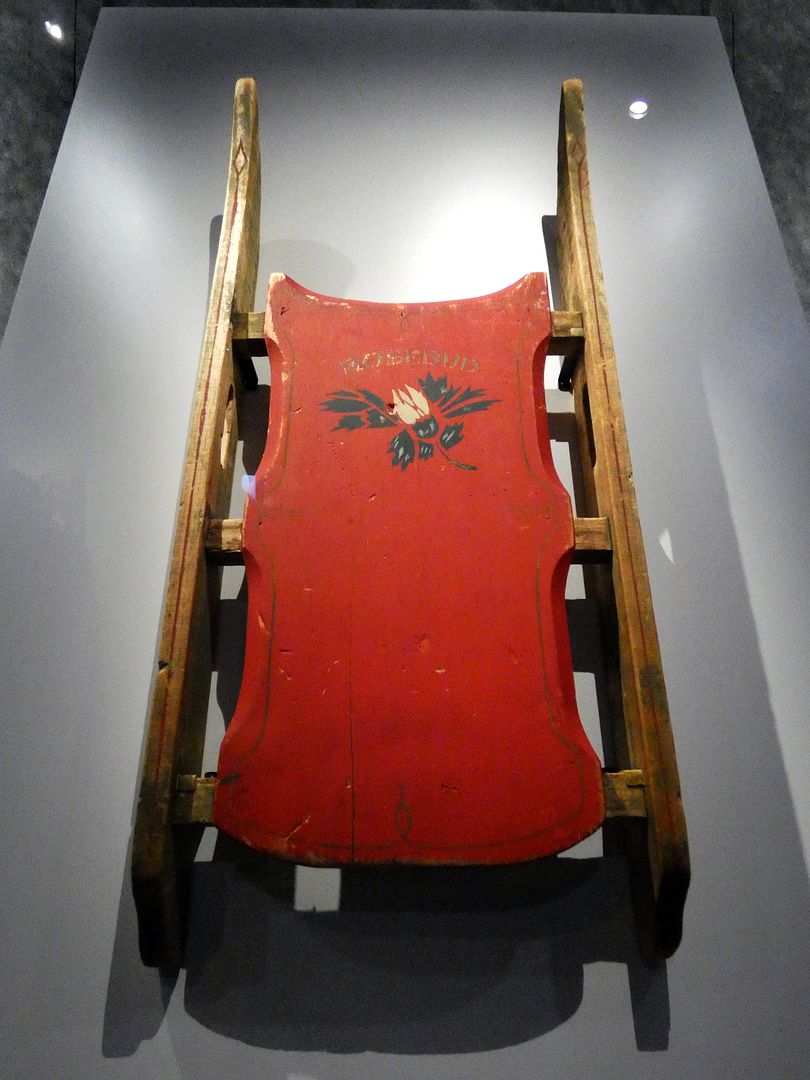
Of course there's the surviving "Rosebud" sled (the third of three created for the film, and the one that didn't burn)—donated to the museum by director Steven Spielberg, who won it at auction in 1982.

Of course, what would an Academy-themed museum be without a few examples of Oscar himself?
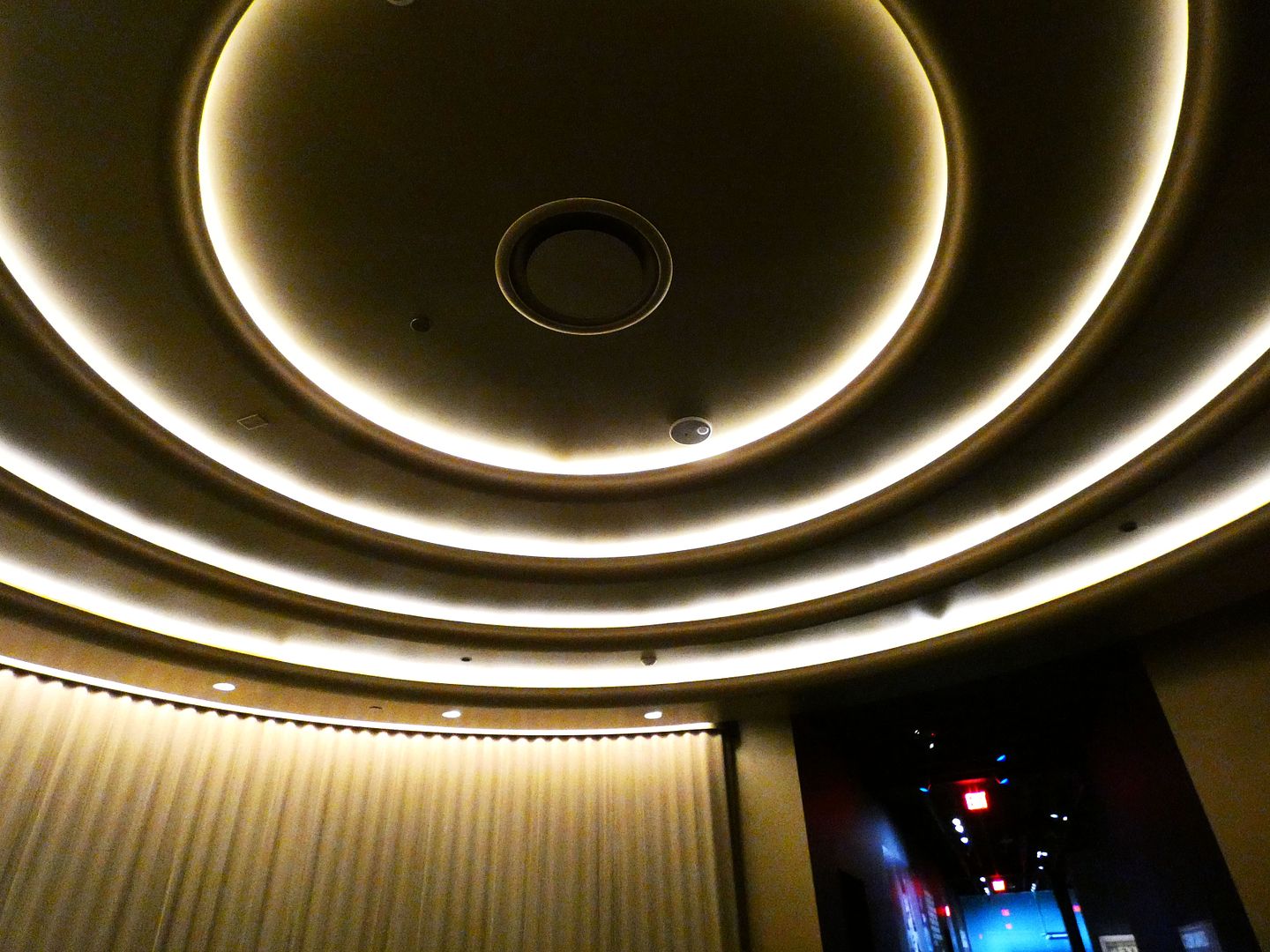
There's a whole circular room devoted to the Oscar statuettes...
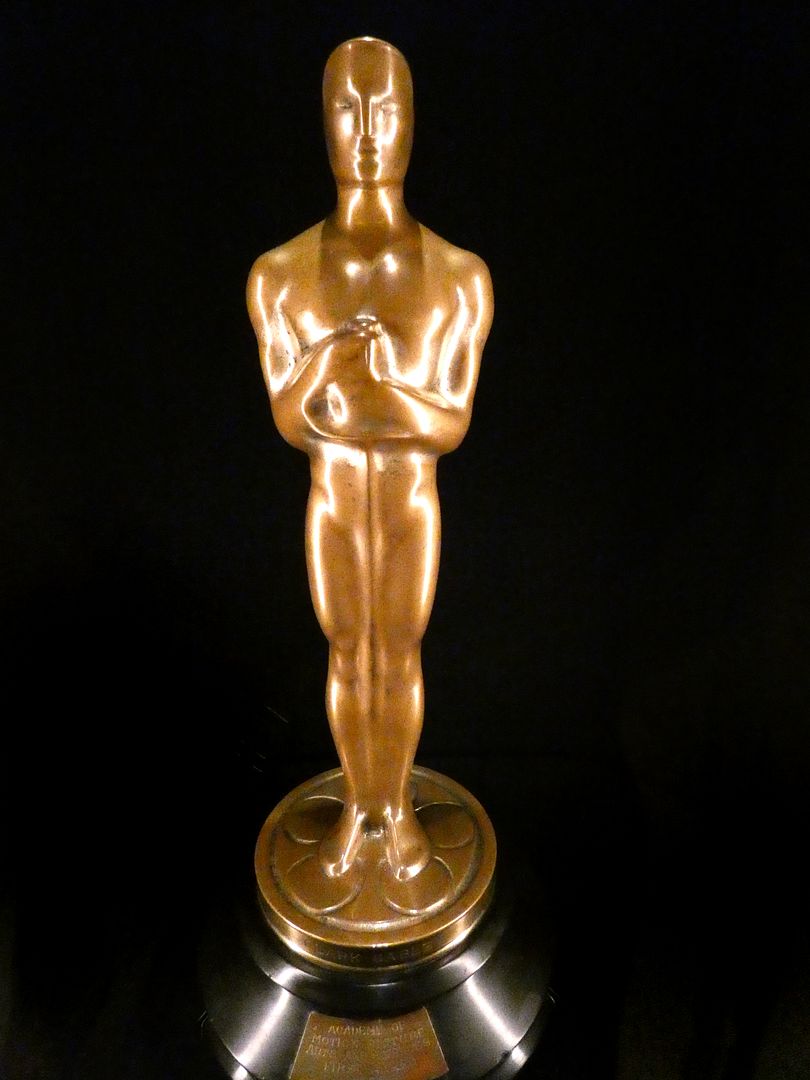
...reportedly the most recognized trophy in the world...
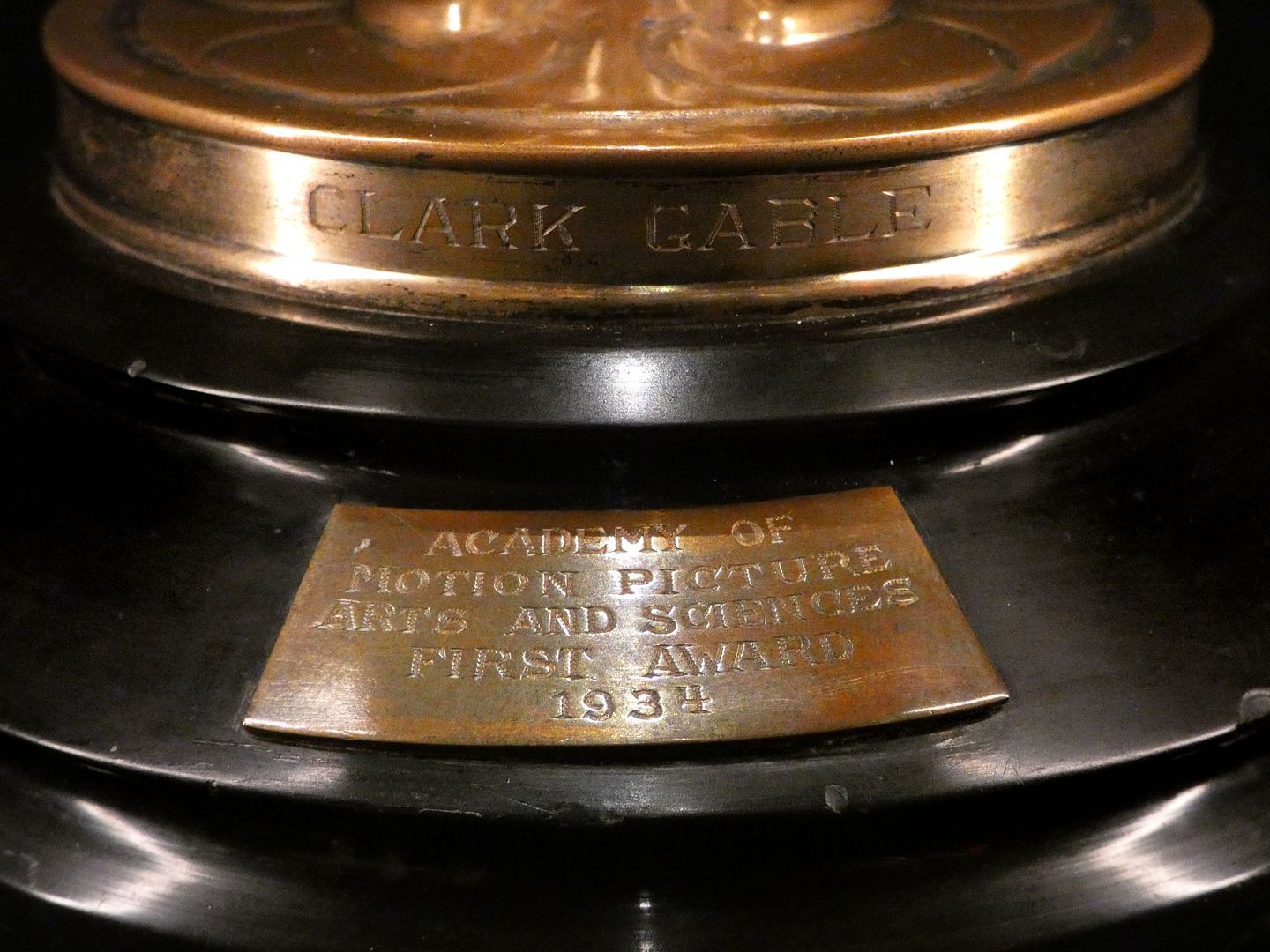
...made of 24k gold-plated bronze.
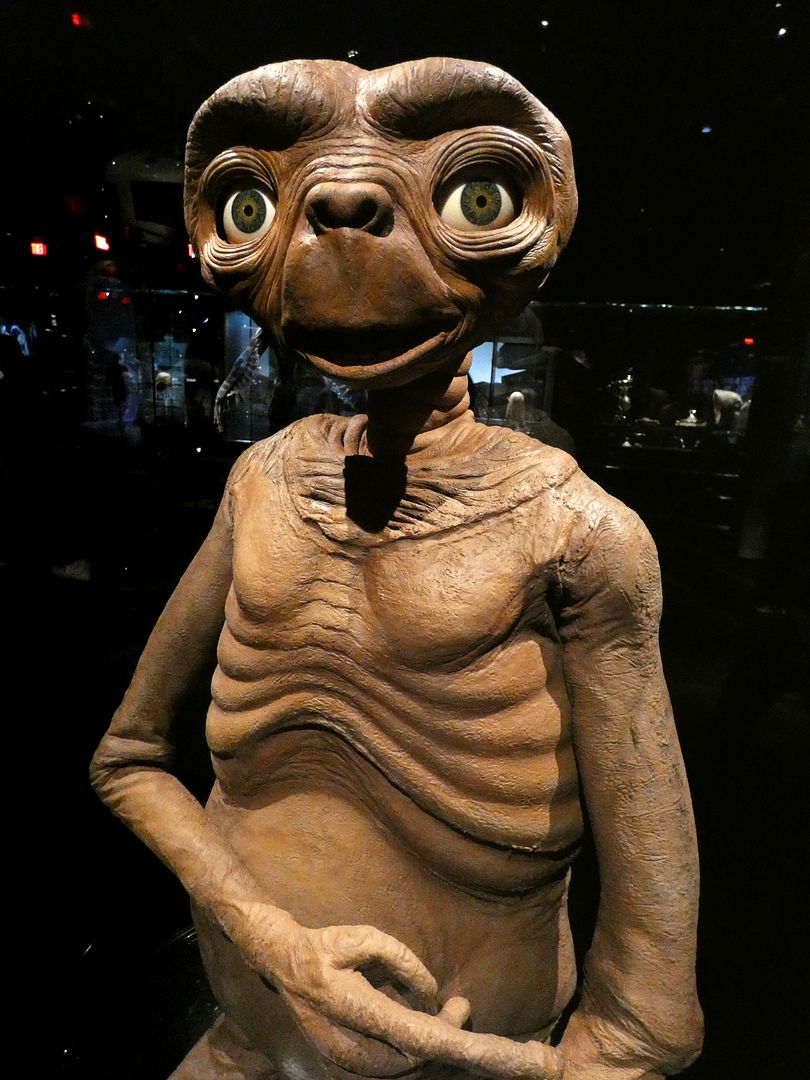
Another Best Picture winner is represented in the Sci-Fi collection of the multi-floor "Stories of Cinema" exhibit—E.T., which also won Best Director, Best Visual Effects (certainly thanks in part to the screen-used, full-body animatronic puppet by Carlo Rambaldi on display), and others in 1983.
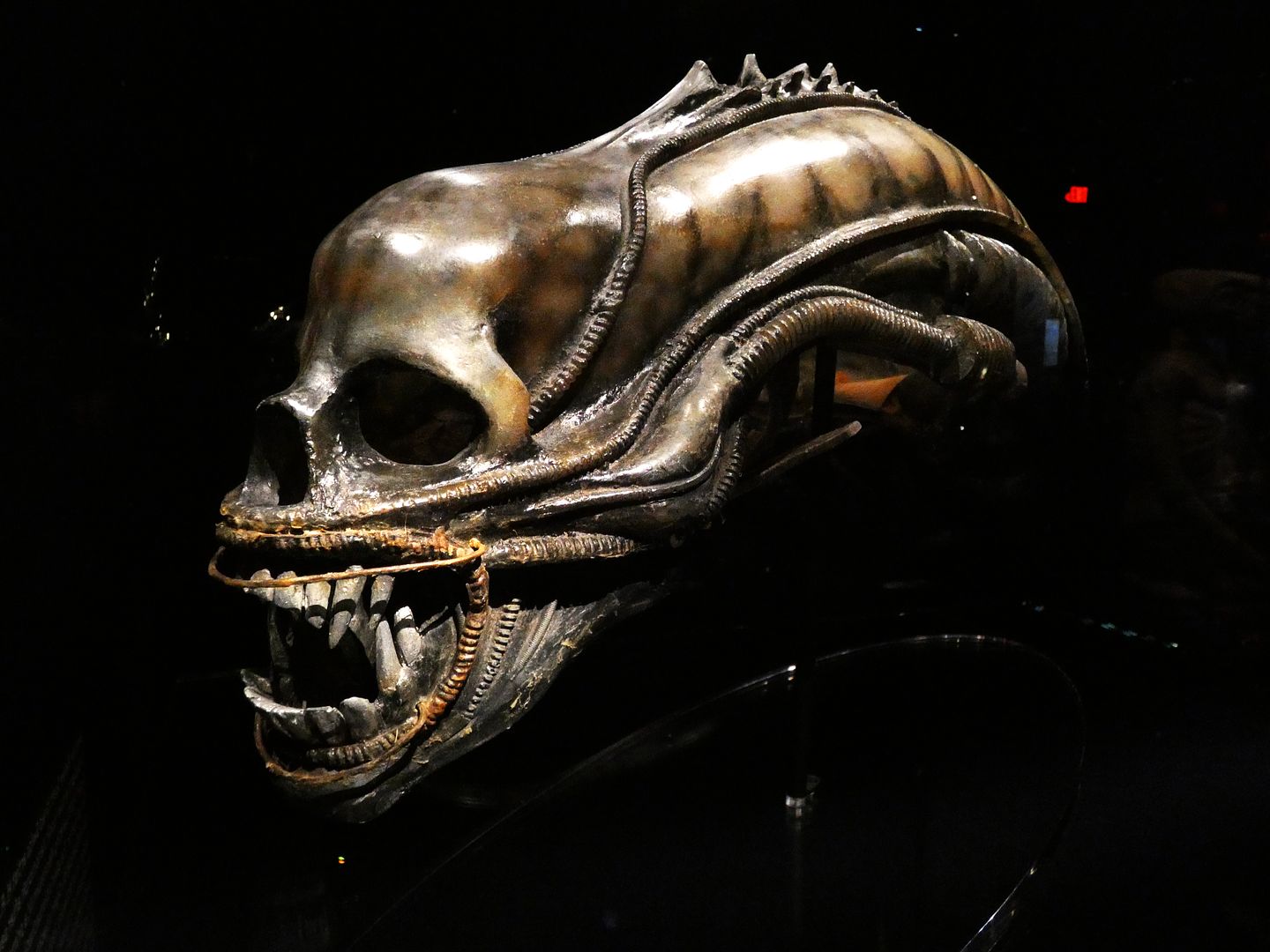
Rambaldi had previously engineered special effects for Alien, including the inner jaws effect of the Xenomorph (whose design was created by H.R. Giger)—for which he won the Best Visual Effects Oscar in 1980.

The animatronic head of Arnold Swarzenegger's T-800, made with real hair, helped The Terminator 2's win the Best Visual Effects Oscar in 1992.
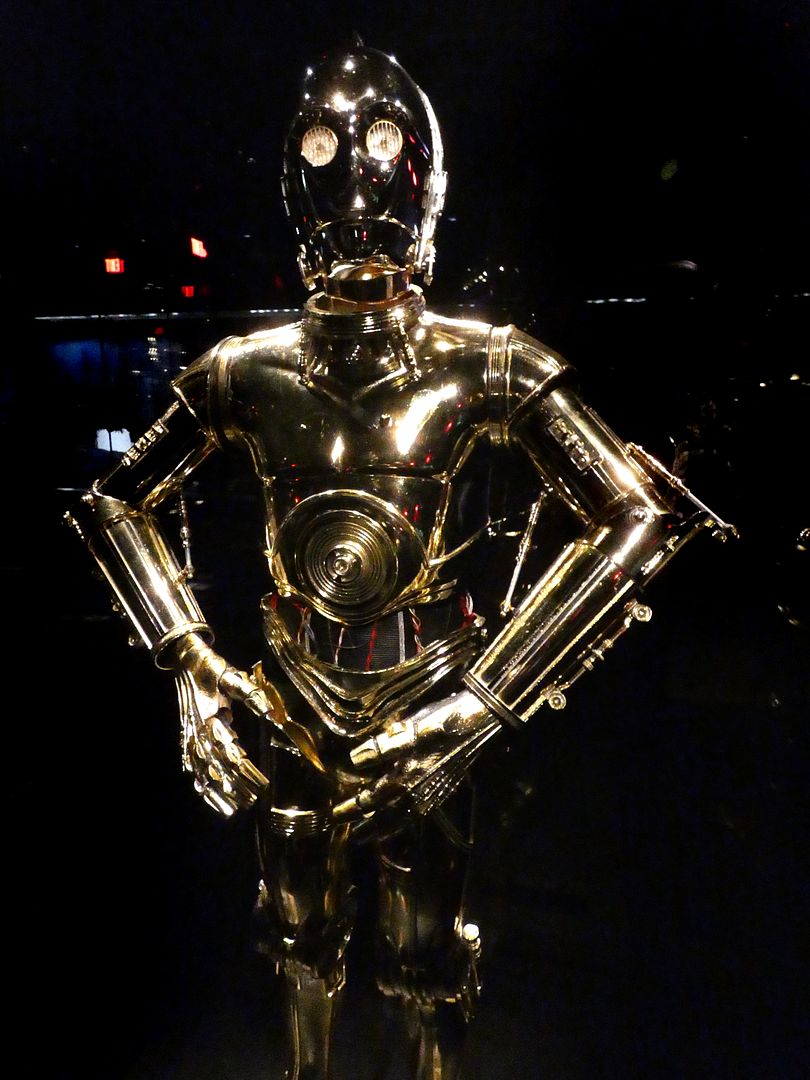
And C-3PO's fiberglass, metal, plastic, and rubber costume—worn by actor Anthony Daniels—helped Star Wars win Best Costume Design in 1978.
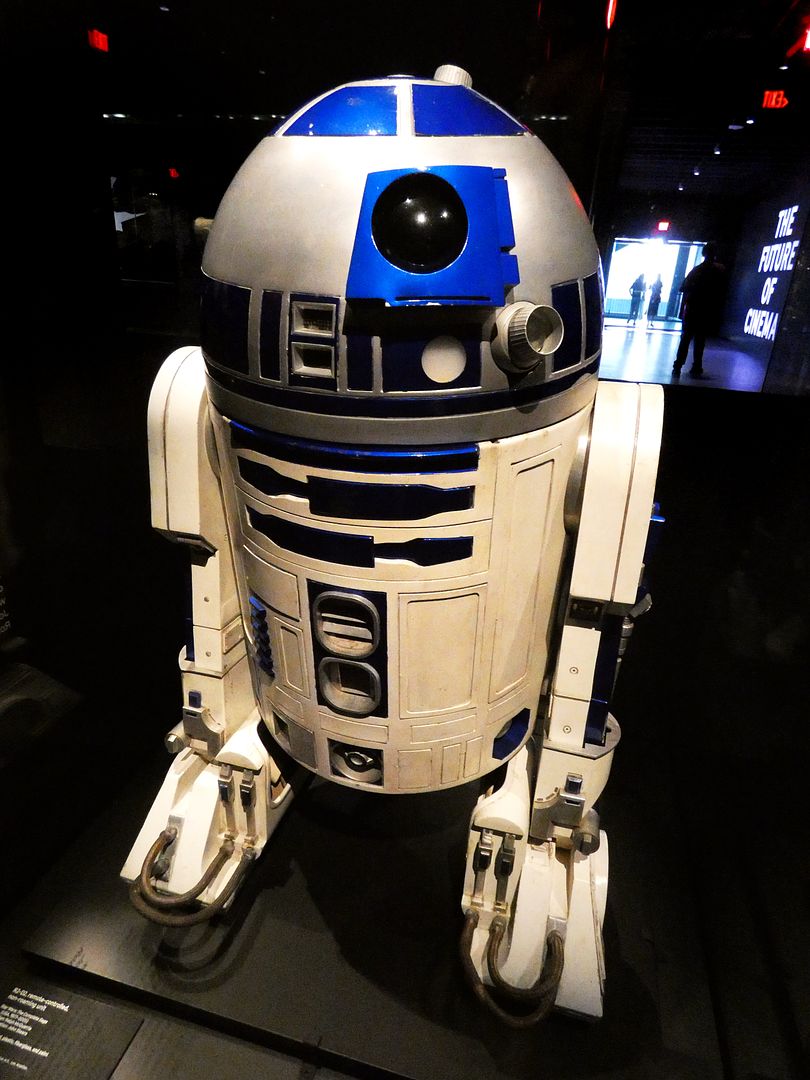
R2D2, however, was a remote-controlled robot—which certainly contributed to the film's awards in visual effects and a Special Achievement Academy Award for sound designer Ben Burtt.
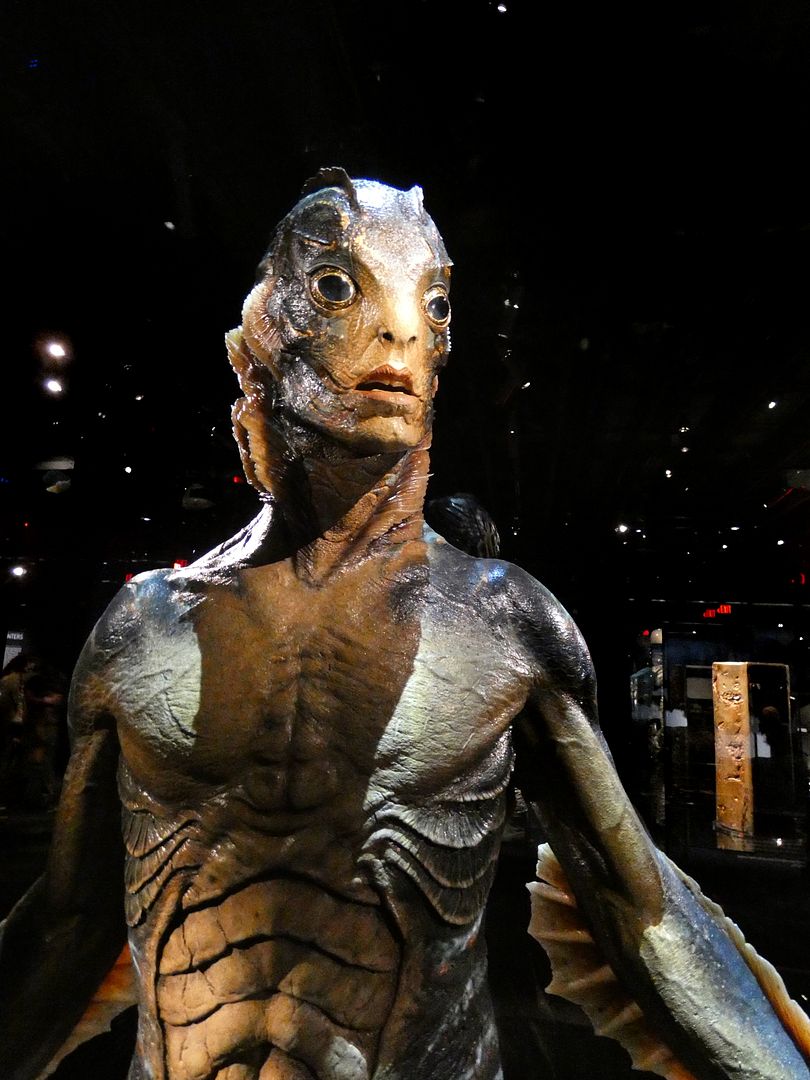
Actor Doug Jones wore a silicone prosthetic suit by Legacy Effects to transform into the amphibious romantic lead of The Shape of Water, which earned both the Best Picture and Best Costume Design awards in 2018.
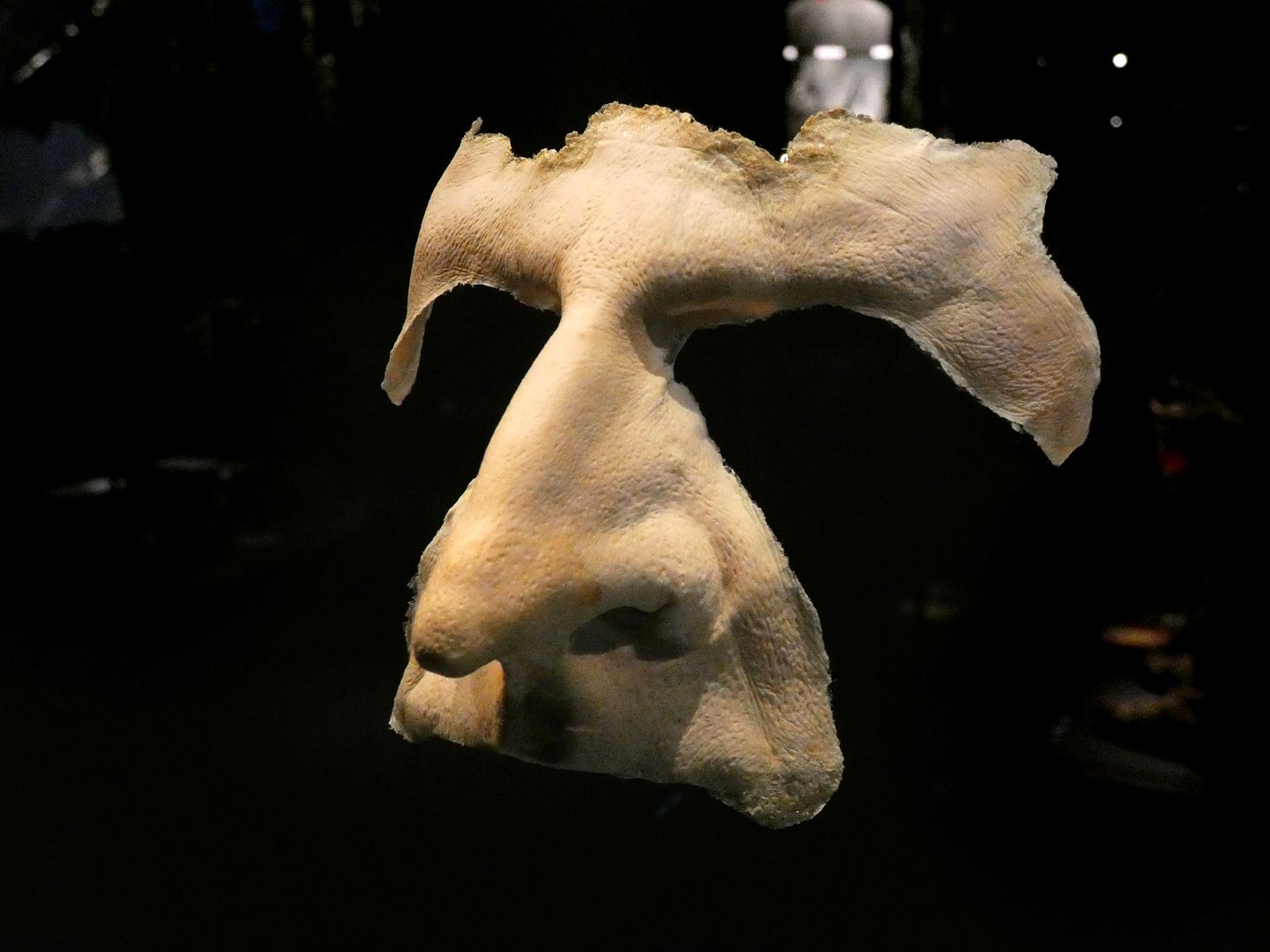
In Tim Burton's Batman Returns, actor Danny Devito wore a foam latex "facial appliance" to transform into the beak-nosed, bird-themed supervillain The Penguin. Although the film was nominated for Best Visual Effects and Best Makeup, it lost in 1993 to Death Becomes Her and Bram Stoker's Dracula, respectively.
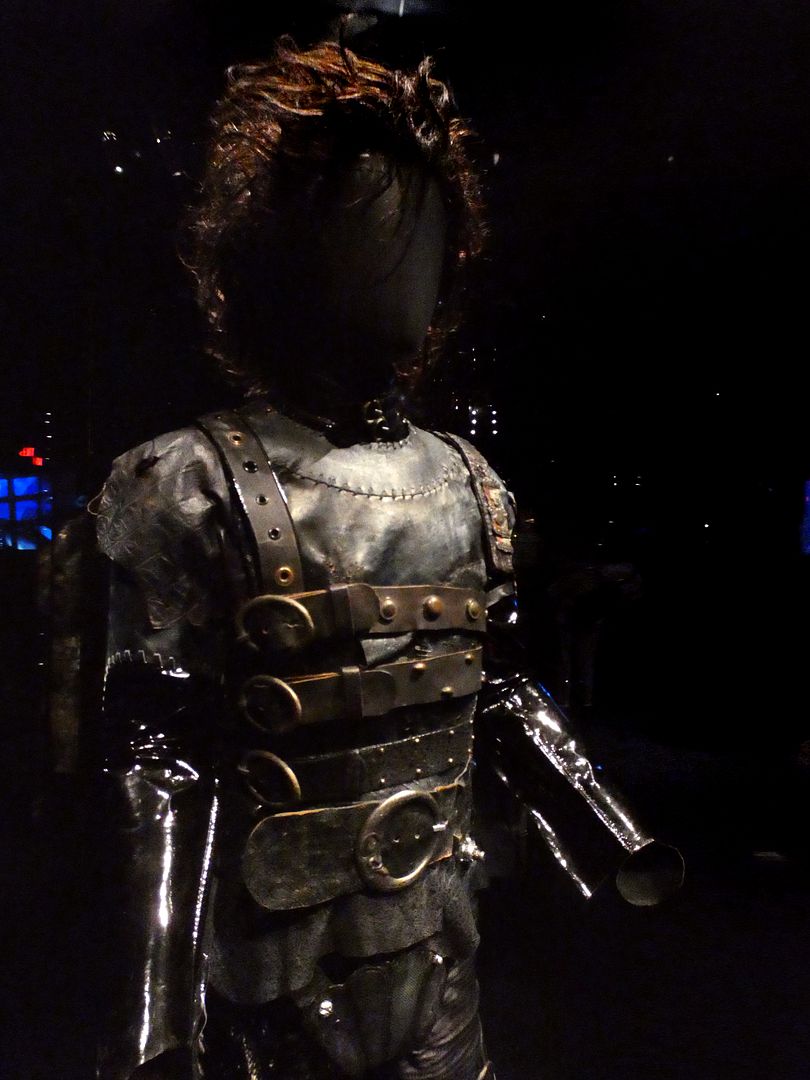
Tim Burton's Edward Scissorhands was surprisingly shut out of the 1991 Academy Awards (nominated only for best makeup, which Dick Tracy won instead)...
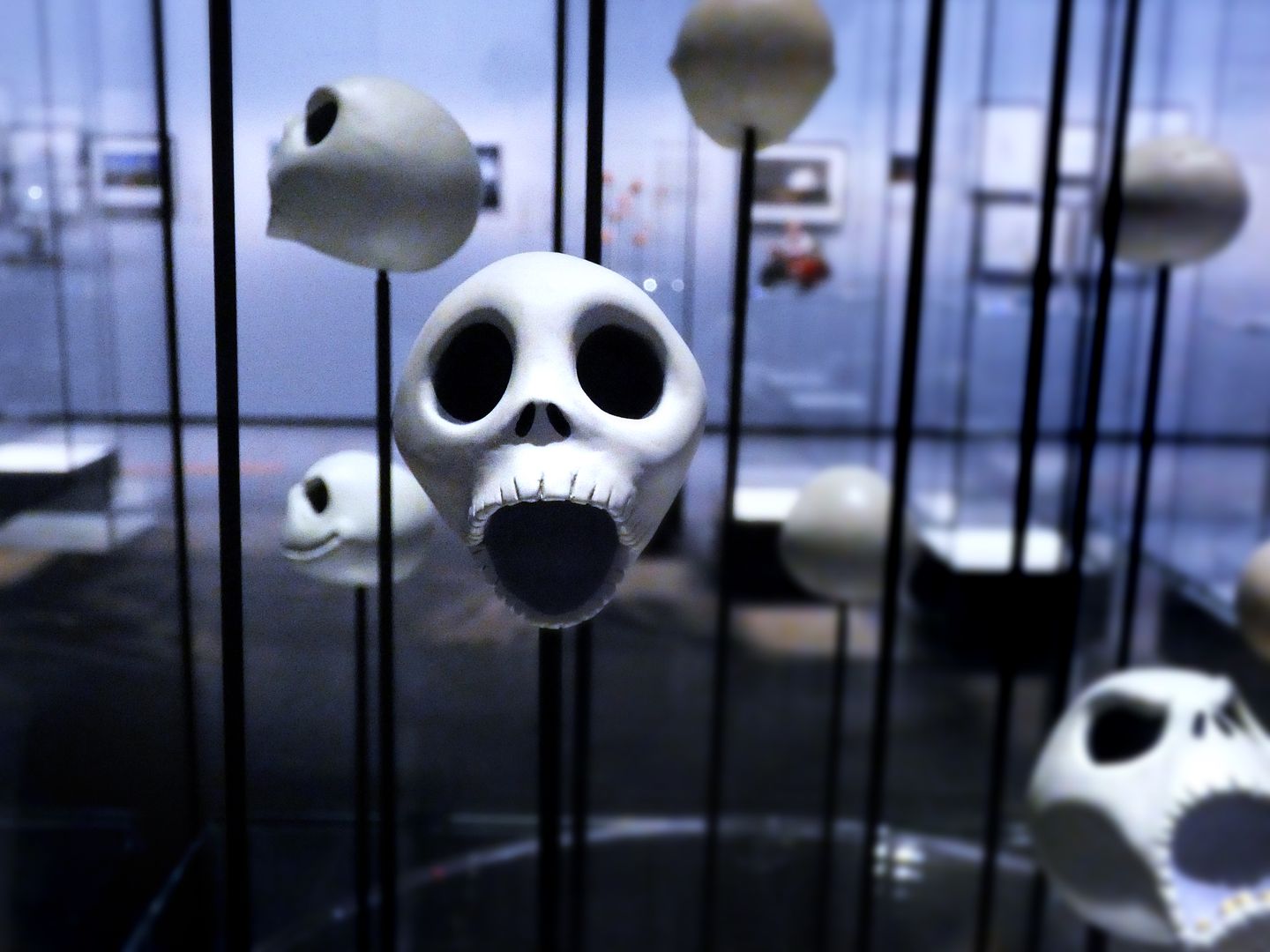
...but his stop-motion animation classic The Nightmare Before Christmas earned its due in 1994 with the Best Visual Effects award.
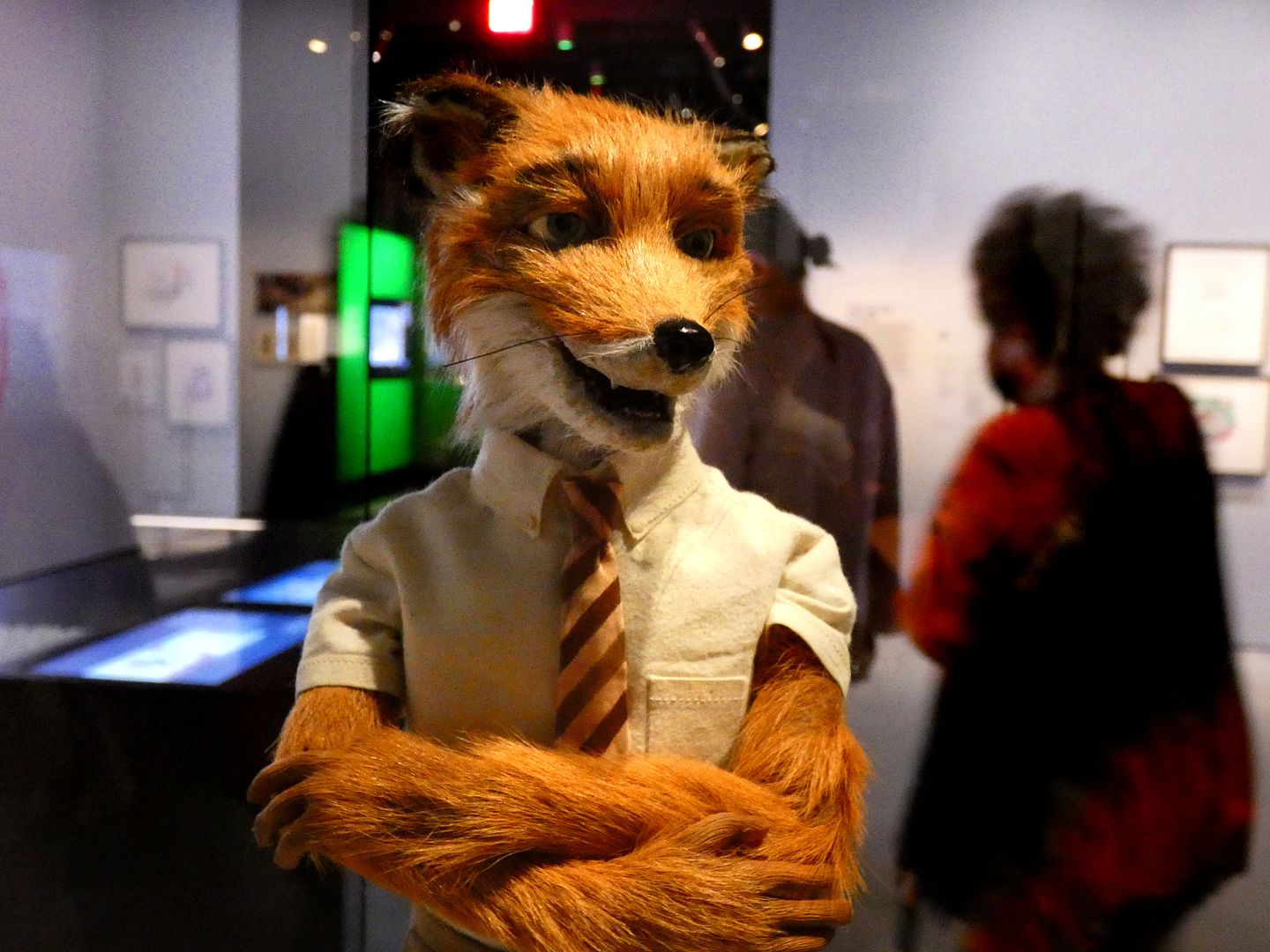
The latter is part of the Academy Museum's exhibit on animation, as part of its "Stories of Cinema" series...

...which also includes stop motion puppets from Wes Anderson's Fantastic Mr. Fox, which won Best Animated Feature in 2010.
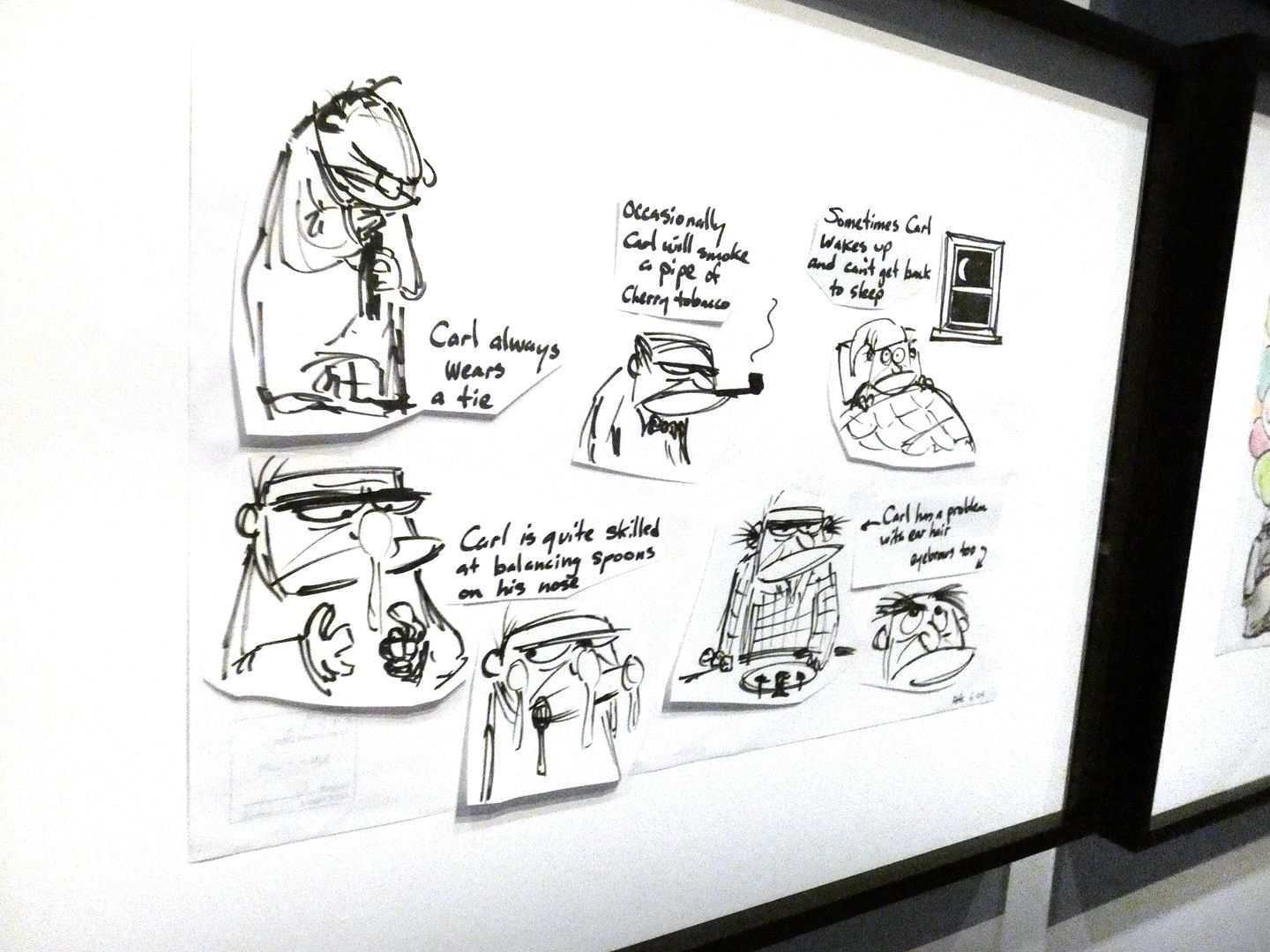
While there are no costumes and no makeup in animated features, there's no shortage of visual character development, including early concept art—which, in the case of Pixar's Up, was sketched by the film's own director, Pete Docter.
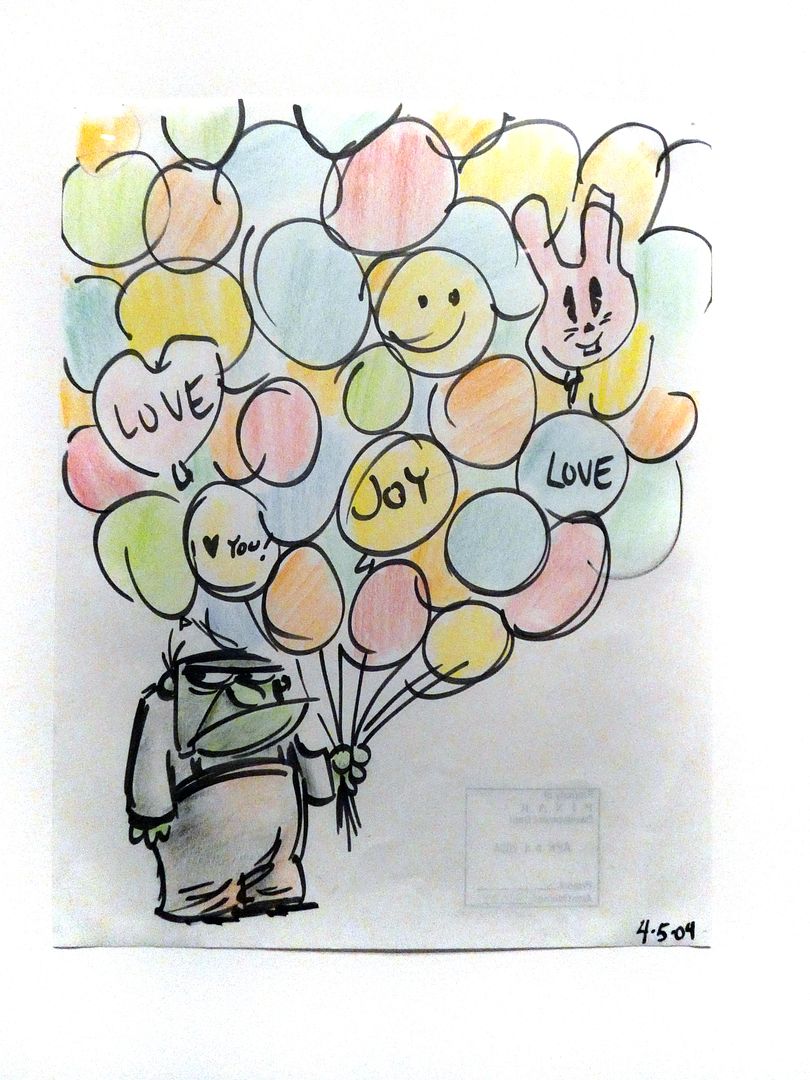
All that production design helped Up earn not only the Best Animated Feature in 2010, but also Best Picture.

The museum seems to attempt to incorporate nearly every Oscar category—including sound, screenplay, and even casting.
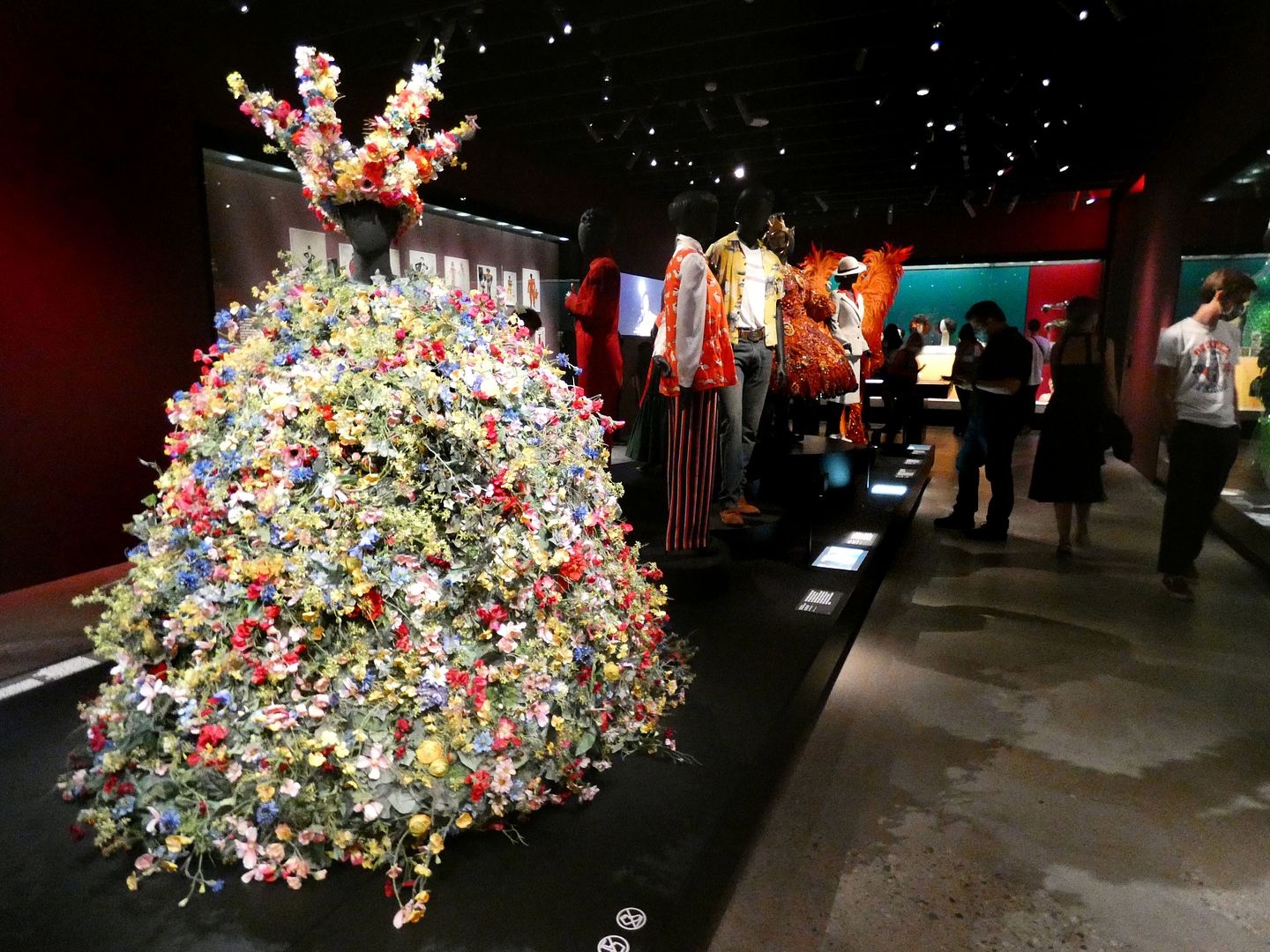
Not the least of those categories is costumes, with some stunners on display like the May Queen dress from Midsommar (2019), though the film was snubbed by the Academy that year. (I guess they were unimpressed by the bear suit?)
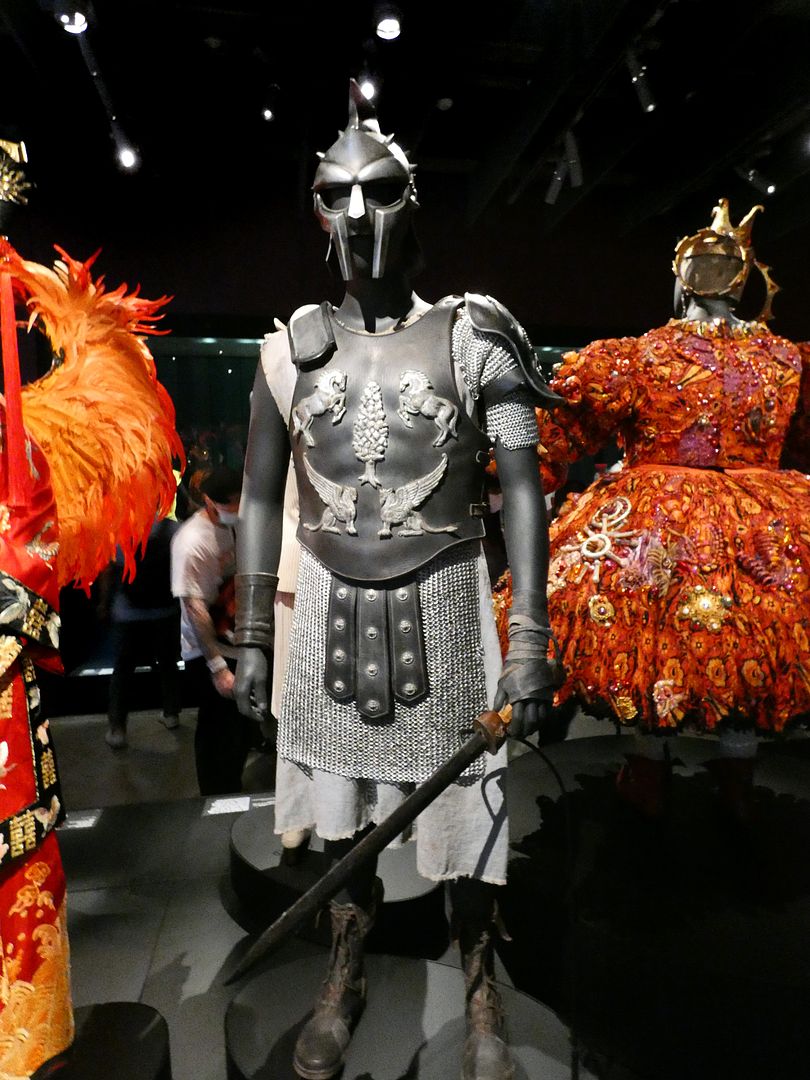
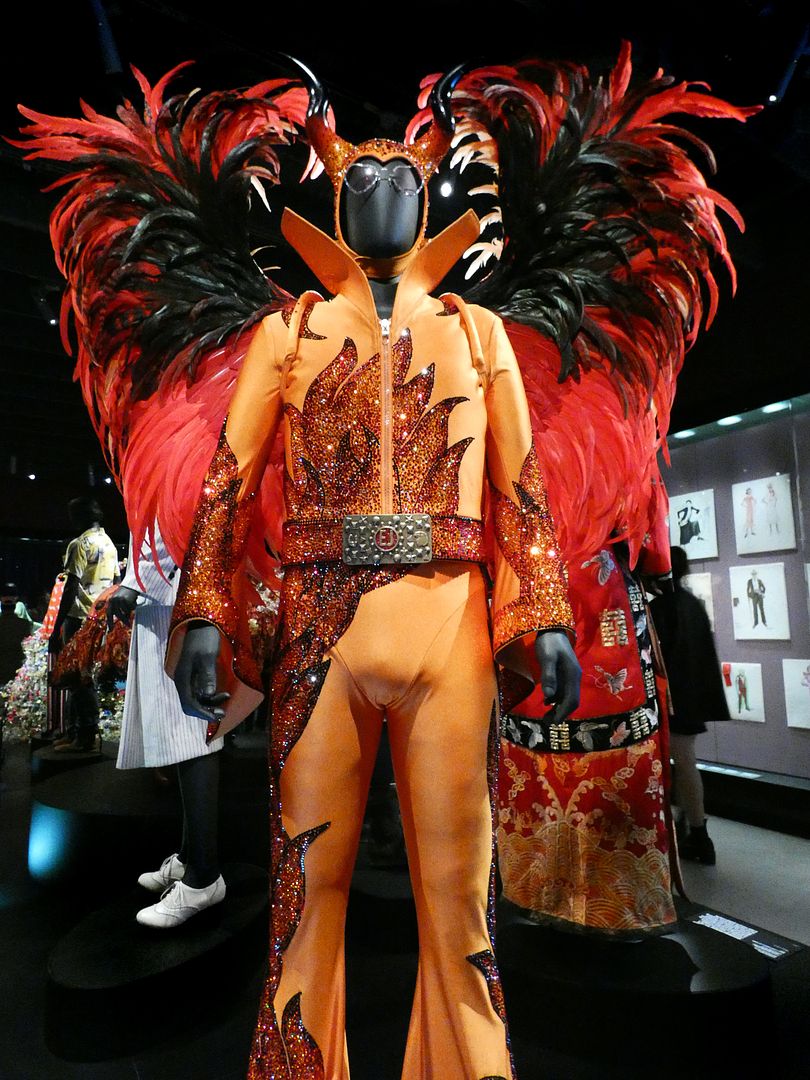
The costume room also includes Russell Crowe's suit of armor (as Maximus) from the Oscar-winning Gladiator (Best Picture, Best Actor, Best Costume Design, and more in 2001) and the "winged devil" show costume worn by Taron Egerton (as Elton John) in Rocketman (2019).

Some costumes are stunningly simple yet effective, like the "Tethered" red jumpsuit from Us (a film not honored by the 2020 Oscars)...
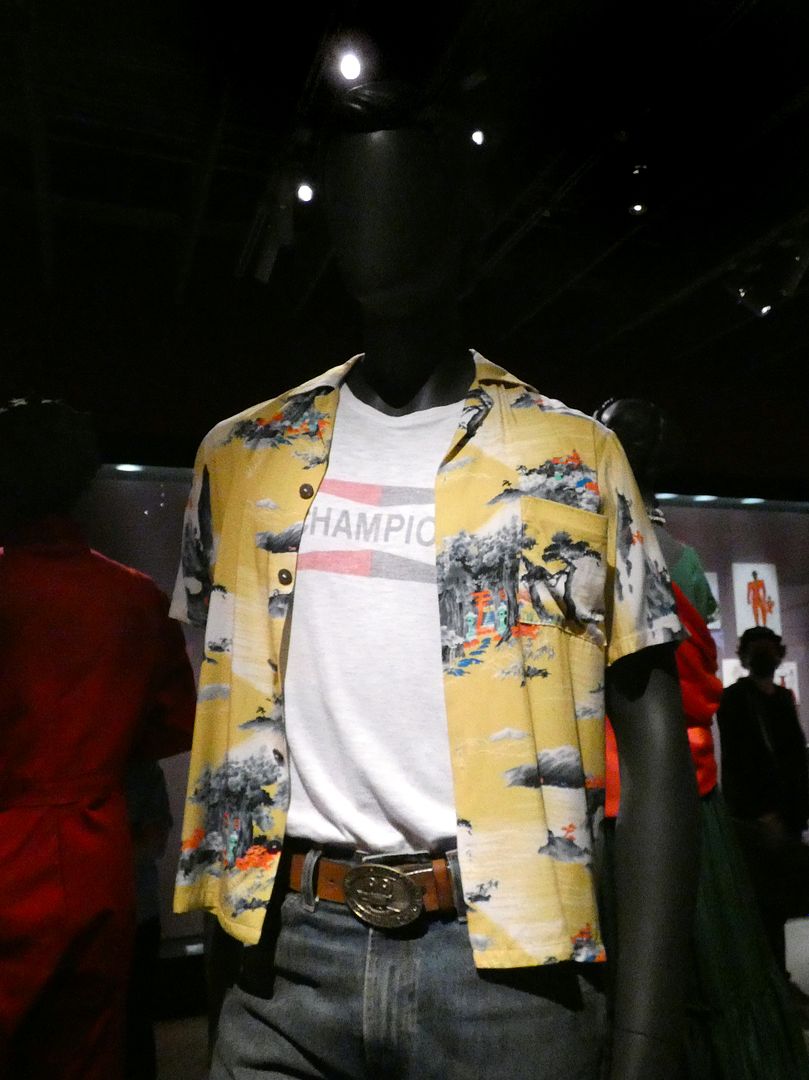
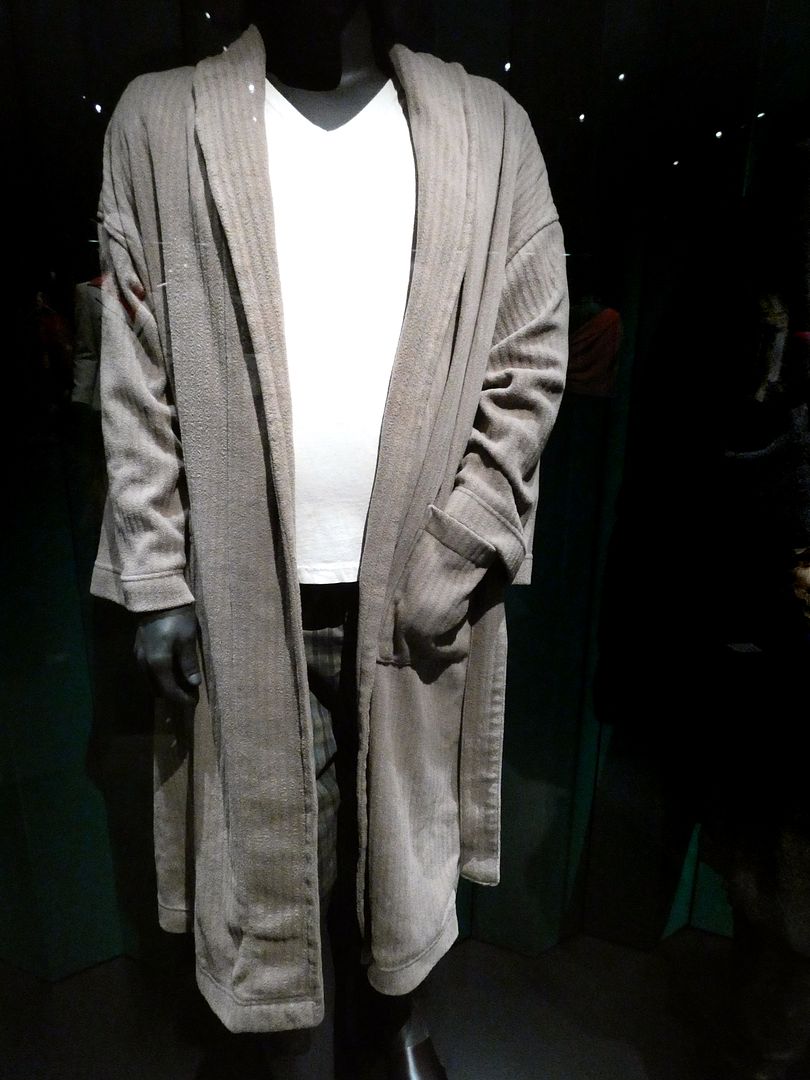
...Cliff Booth's tropical button-down worn by Best Supporting Actor Brad Pitt in the 2020 Best Picture Once Upon a Time in Hollywood (also Best Costume Design 2020) and the bathrobe worn by "The Dude" in The Big Lebowski (no Oscar nominations or awards).

Perhaps one of the most famous costume pieces of all time is the pair of ruby slippers worn by Judy Garland in the 1940 Best Picture The Wizard of Oz. Although there were reportedly several ruby slippers in existence, the Academy Museum managed to purchase and display one of them.
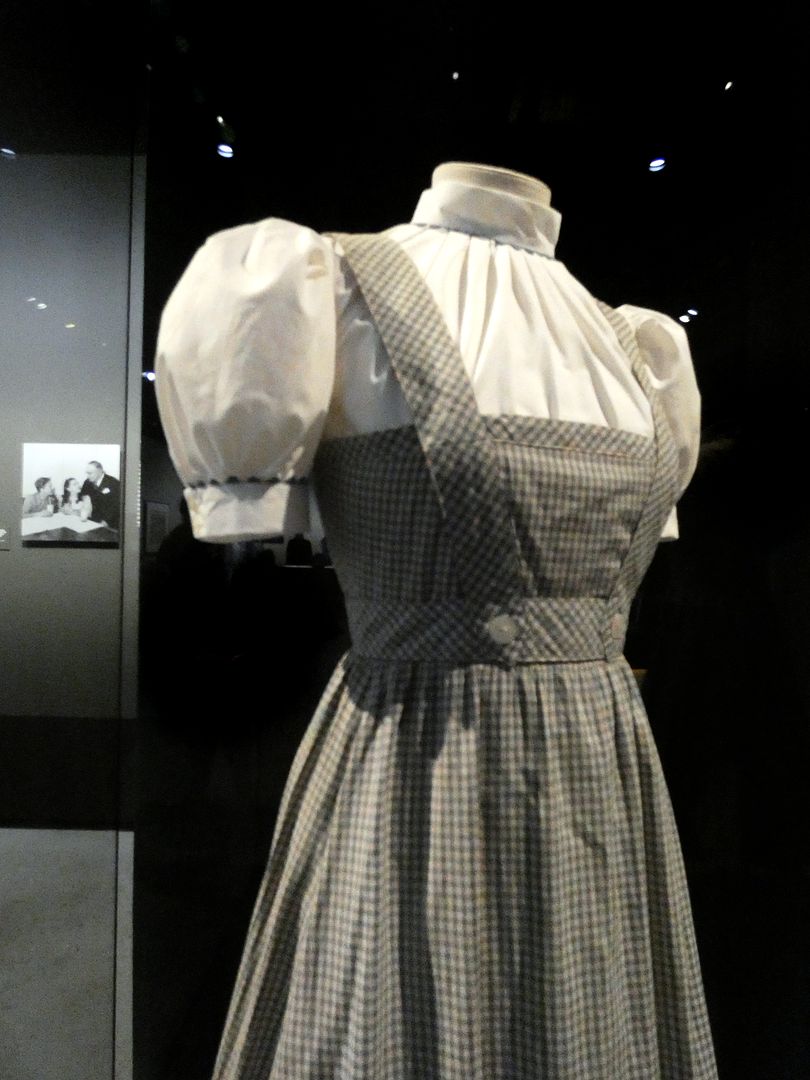
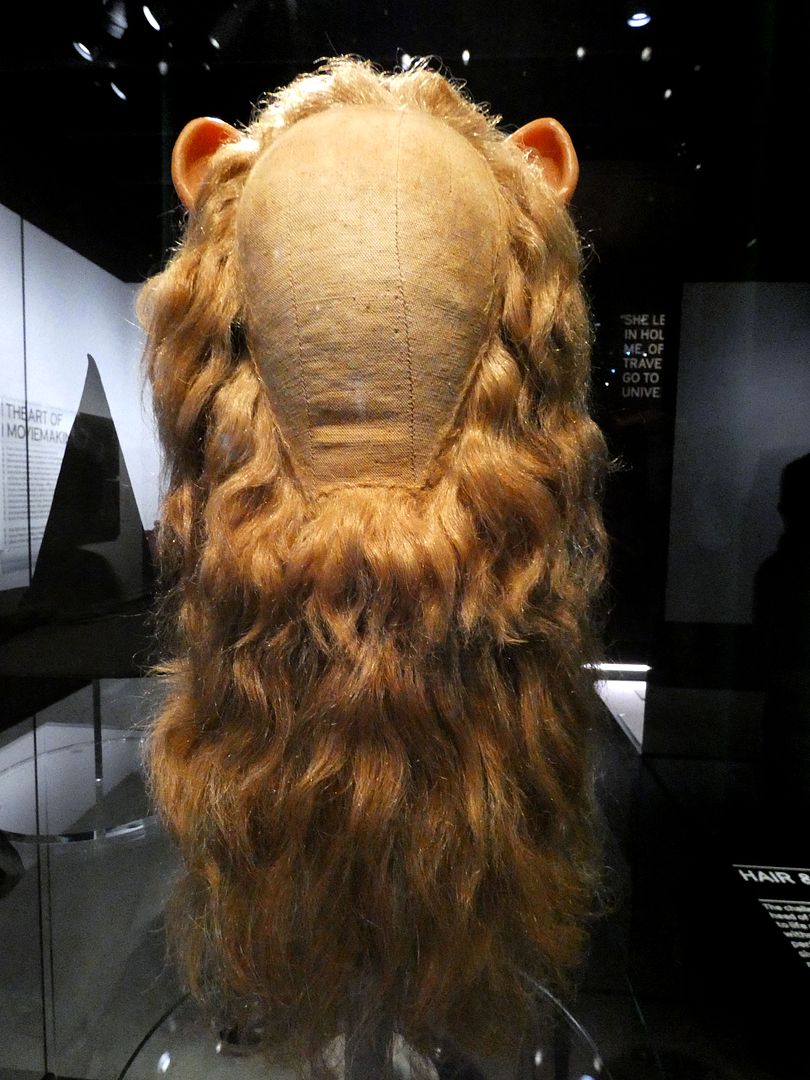
On display in the section devoted to the film are also Dorothy's gingham pinafore, the Cowardly Lion's headpiece and beard...

...and a "Munchkin soldier" uniform.
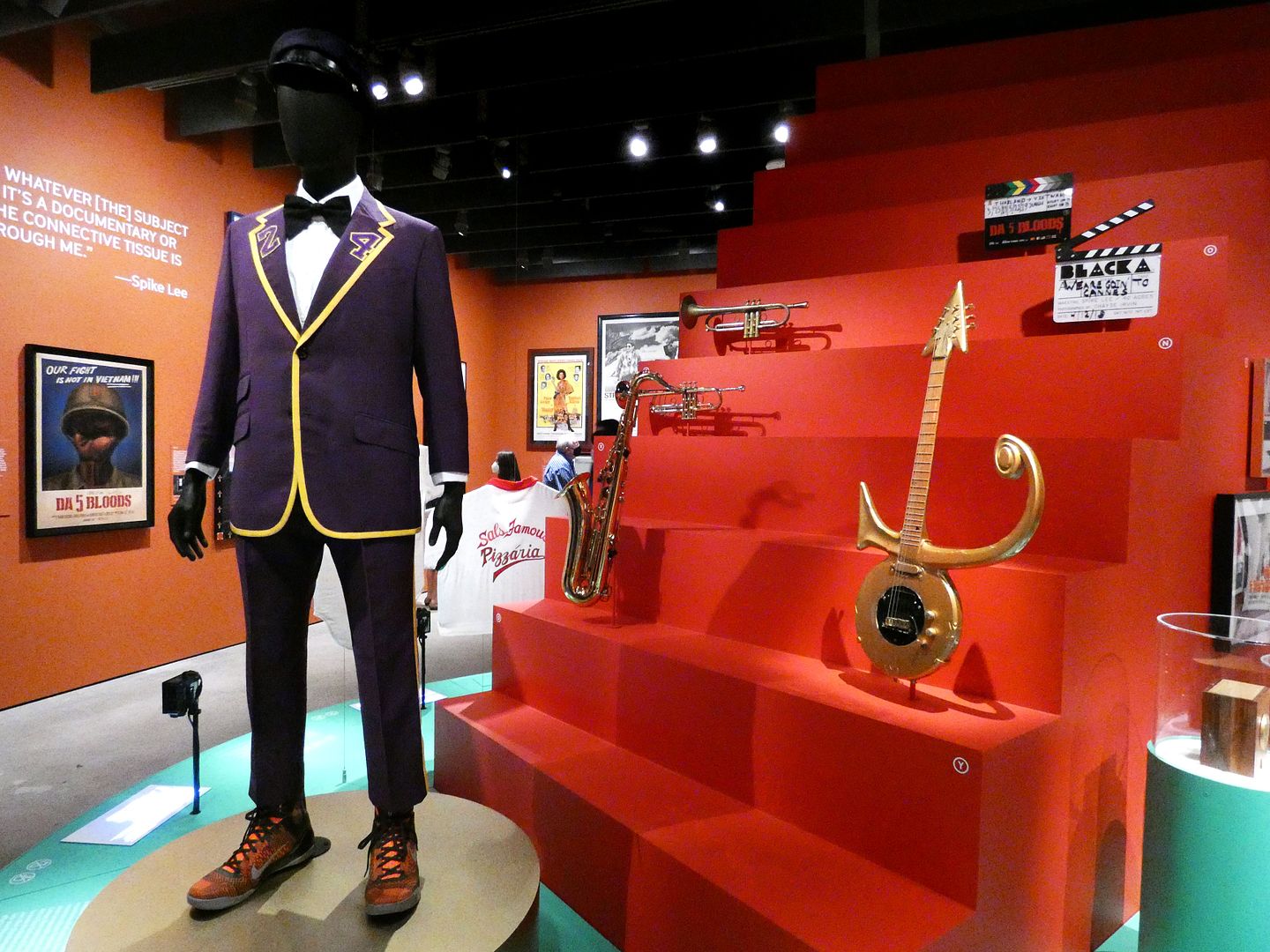
There's even an entire room devoted to director Spike Lee's personal collection of artifacts, mementos, and more...
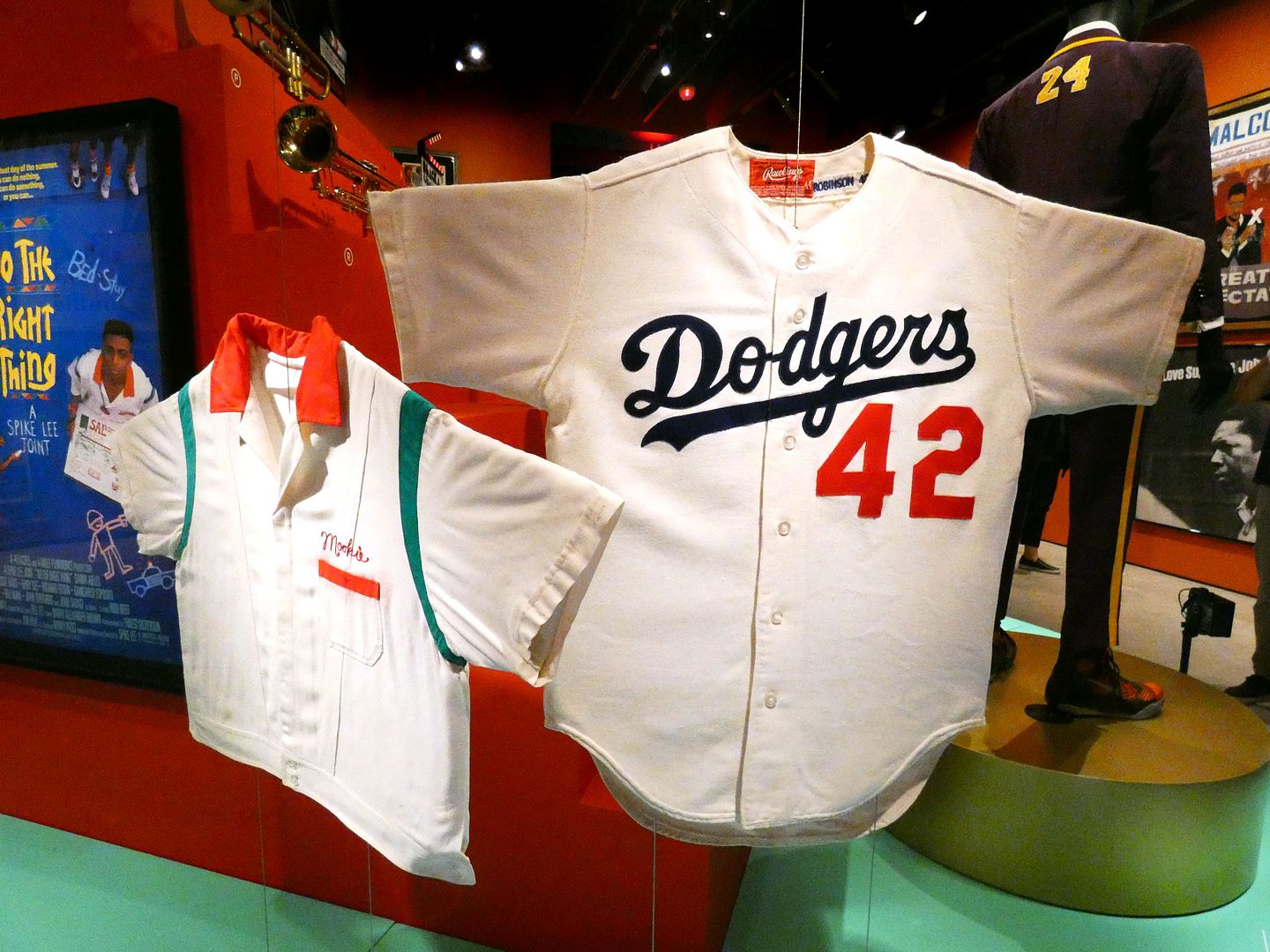
...including some screen-worn costumes from his 1989 film Do the Right Thing (which won for Best Screenplay and Best Supporting Actor for Danny Aiello).
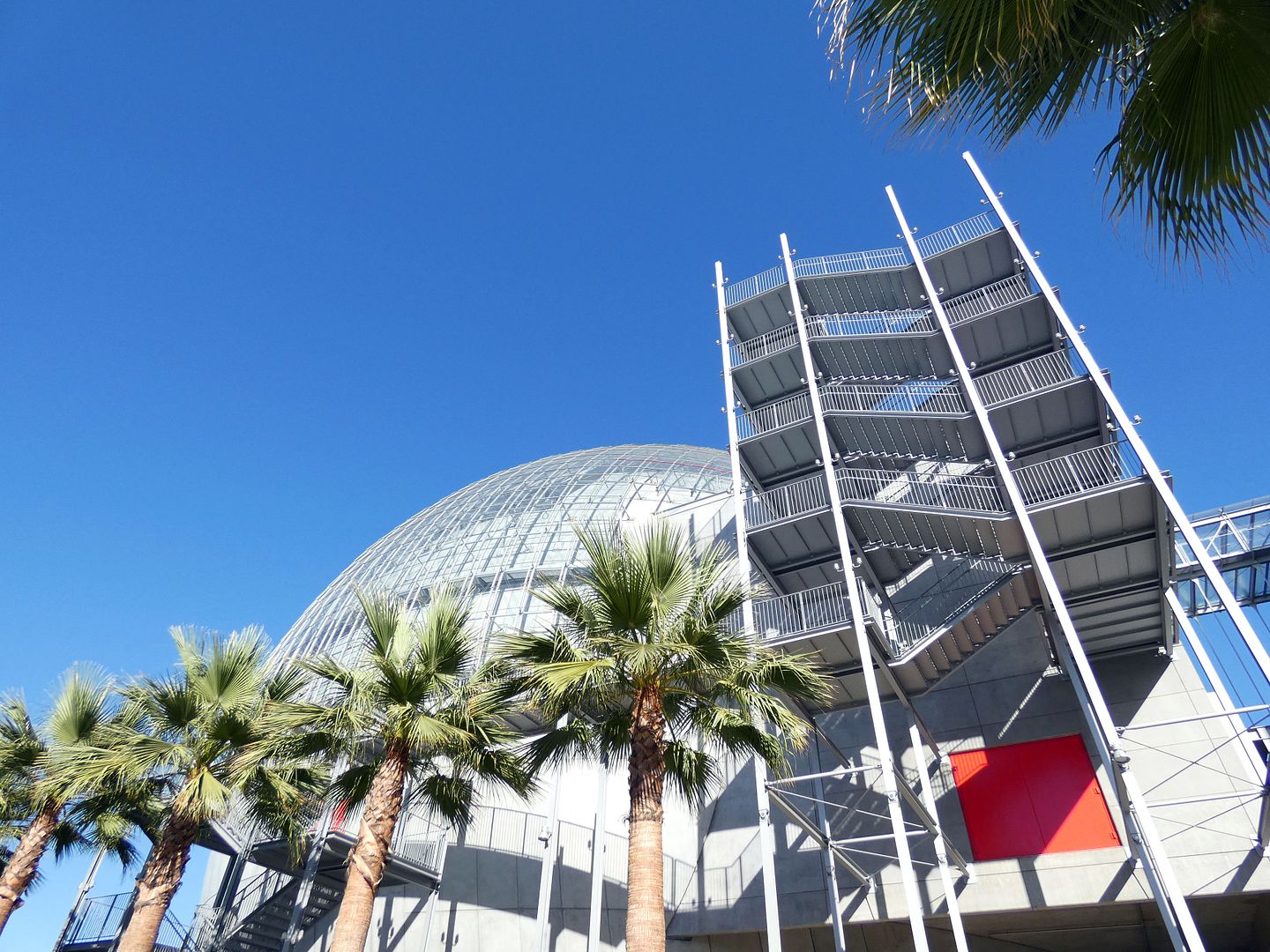
It feels nearly impossible to see everything in one visit—and definitely impossible to share it all in one post.
Stay tuned for dispatches from "the Death Star," a.k.a the sphere that houses the new David Geffen Theater, which was built as an annex behind the extant building.
Unfortunately, there's nothing left of the May Company inside the building. Not a trace.
But at least its Streamline Moderne gold mosaic-tiled corner cylinder got completely restored (in some cases, saving original tiles and in others, reproducing them from their original manufacturer in Italy).
Related Posts:

Great post! You covered so much. Several things here I missed - need to go back!
ReplyDeleteTerrific! Thanks, Sand1.
ReplyDelete